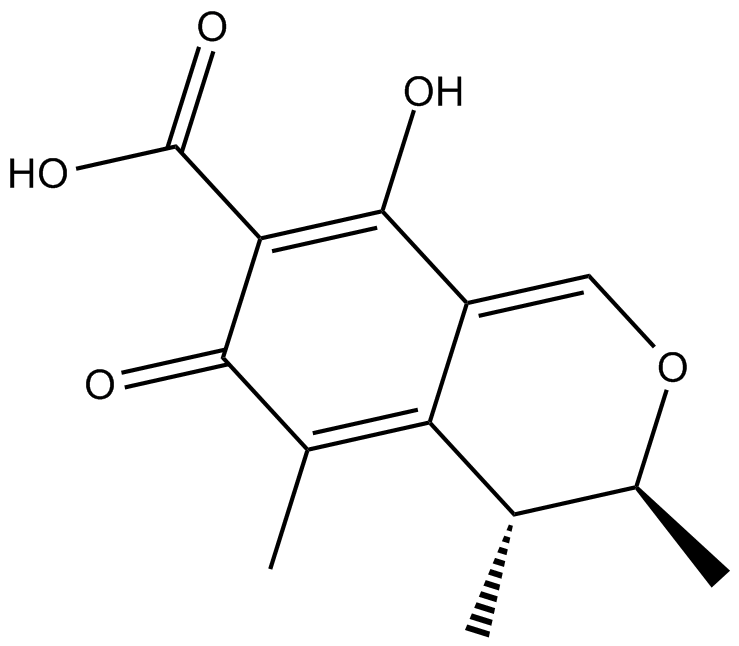Apoptosis
As one of the cellular death mechanisms, apoptosis, also known as programmed cell death, can be defined as the process of a proper death of any cell under certain or necessary conditions. Apoptosis is controlled by the interactions between several molecules and responsible for the elimination of unwanted cells from the body.
Many biochemical events and a series of morphological changes occur at the early stage and increasingly continue till the end of apoptosis process. Morphological event cascade including cytoplasmic filament aggregation, nuclear condensation, cellular fragmentation, and plasma membrane blebbing finally results in the formation of apoptotic bodies. Several biochemical changes such as protein modifications/degradations, DNA and chromatin deteriorations, and synthesis of cell surface markers form morphological process during apoptosis.
Apoptosis can be stimulated by two different pathways: (1) intrinsic pathway (or mitochondria pathway) that mainly occurs via release of cytochrome c from the mitochondria and (2) extrinsic pathway when Fas death receptor is activated by a signal coming from the outside of the cell.
Different gene families such as caspases, inhibitor of apoptosis proteins, B cell lymphoma (Bcl)-2 family, tumor necrosis factor (TNF) receptor gene superfamily, or p53 gene are involved and/or collaborate in the process of apoptosis.
Caspase family comprises conserved cysteine aspartic-specific proteases, and members of caspase family are considerably crucial in the regulation of apoptosis. There are 14 different caspases in mammals, and they are basically classified as the initiators including caspase-2, -8, -9, and -10; and the effectors including caspase-3, -6, -7, and -14; and also the cytokine activators including caspase-1, -4, -5, -11, -12, and -13. In vertebrates, caspase-dependent apoptosis occurs through two main interconnected pathways which are intrinsic and extrinsic pathways. The intrinsic or mitochondrial apoptosis pathway can be activated through various cellular stresses that lead to cytochrome c release from the mitochondria and the formation of the apoptosome, comprised of APAF1, cytochrome c, ATP, and caspase-9, resulting in the activation of caspase-9. Active caspase-9 then initiates apoptosis by cleaving and thereby activating executioner caspases. The extrinsic apoptosis pathway is activated through the binding of a ligand to a death receptor, which in turn leads, with the help of the adapter proteins (FADD/TRADD), to recruitment, dimerization, and activation of caspase-8 (or 10). Active caspase-8 (or 10) then either initiates apoptosis directly by cleaving and thereby activating executioner caspase (-3, -6, -7), or activates the intrinsic apoptotic pathway through cleavage of BID to induce efficient cell death. In a heat shock-induced death, caspase-2 induces apoptosis via cleavage of Bid.
Bcl-2 family members are divided into three subfamilies including (i) pro-survival subfamily members (Bcl-2, Bcl-xl, Bcl-W, MCL1, and BFL1/A1), (ii) BH3-only subfamily members (Bad, Bim, Noxa, and Puma9), and (iii) pro-apoptotic mediator subfamily members (Bax and Bak). Following activation of the intrinsic pathway by cellular stress, pro‑apoptotic BCL‑2 homology 3 (BH3)‑only proteins inhibit the anti‑apoptotic proteins Bcl‑2, Bcl-xl, Bcl‑W and MCL1. The subsequent activation and oligomerization of the Bak and Bax result in mitochondrial outer membrane permeabilization (MOMP). This results in the release of cytochrome c and SMAC from the mitochondria. Cytochrome c forms a complex with caspase-9 and APAF1, which leads to the activation of caspase-9. Caspase-9 then activates caspase-3 and caspase-7, resulting in cell death. Inhibition of this process by anti‑apoptotic Bcl‑2 proteins occurs via sequestration of pro‑apoptotic proteins through binding to their BH3 motifs.
One of the most important ways of triggering apoptosis is mediated through death receptors (DRs), which are classified in TNF superfamily. There exist six DRs: DR1 (also called TNFR1); DR2 (also called Fas); DR3, to which VEGI binds; DR4 and DR5, to which TRAIL binds; and DR6, no ligand has yet been identified that binds to DR6. The induction of apoptosis by TNF ligands is initiated by binding to their specific DRs, such as TNFα/TNFR1, FasL /Fas (CD95, DR2), TRAIL (Apo2L)/DR4 (TRAIL-R1) or DR5 (TRAIL-R2). When TNF-α binds to TNFR1, it recruits a protein called TNFR-associated death domain (TRADD) through its death domain (DD). TRADD then recruits a protein called Fas-associated protein with death domain (FADD), which then sequentially activates caspase-8 and caspase-3, and thus apoptosis. Alternatively, TNF-α can activate mitochondria to sequentially release ROS, cytochrome c, and Bax, leading to activation of caspase-9 and caspase-3 and thus apoptosis. Some of the miRNAs can inhibit apoptosis by targeting the death-receptor pathway including miR-21, miR-24, and miR-200c.
p53 has the ability to activate intrinsic and extrinsic pathways of apoptosis by inducing transcription of several proteins like Puma, Bid, Bax, TRAIL-R2, and CD95.
Some inhibitors of apoptosis proteins (IAPs) can inhibit apoptosis indirectly (such as cIAP1/BIRC2, cIAP2/BIRC3) or inhibit caspase directly, such as XIAP/BIRC4 (inhibits caspase-3, -7, -9), and Bruce/BIRC6 (inhibits caspase-3, -6, -7, -8, -9).
Any alterations or abnormalities occurring in apoptotic processes contribute to development of human diseases and malignancies especially cancer.
References:
1.Yağmur Kiraz, Aysun Adan, Melis Kartal Yandim, et al. Major apoptotic mechanisms and genes involved in apoptosis[J]. Tumor Biology, 2016, 37(7):8471.
2.Aggarwal B B, Gupta S C, Kim J H. Historical perspectives on tumor necrosis factor and its superfamily: 25 years later, a golden journey.[J]. Blood, 2012, 119(3):651.
3.Ashkenazi A, Fairbrother W J, Leverson J D, et al. From basic apoptosis discoveries to advanced selective BCL-2 family inhibitors[J]. Nature Reviews Drug Discovery, 2017.
4.McIlwain D R, Berger T, Mak T W. Caspase functions in cell death and disease[J]. Cold Spring Harbor perspectives in biology, 2013, 5(4): a008656.
5.Ola M S, Nawaz M, Ahsan H. Role of Bcl-2 family proteins and caspases in the regulation of apoptosis[J]. Molecular and cellular biochemistry, 2011, 351(1-2): 41-58.
What is Apoptosis? The Apoptotic Pathways and the Caspase Cascade
Targets for Apoptosis
- Pyroptosis(15)
- Caspase(77)
- 14.3.3 Proteins(3)
- Apoptosis Inducers(71)
- Bax(15)
- Bcl-2 Family(136)
- Bcl-xL(13)
- c-RET(15)
- IAP(32)
- KEAP1-Nrf2(73)
- MDM2(21)
- p53(137)
- PC-PLC(6)
- PKD(8)
- RasGAP (Ras- P21)(2)
- Survivin(8)
- Thymidylate Synthase(12)
- TNF-α(141)
- Other Apoptosis(1144)
- Apoptosis Detection(0)
- Caspase Substrate(0)
- APC(6)
- PD-1/PD-L1 interaction(60)
- ASK1(4)
- PAR4(2)
- RIP kinase(47)
- FKBP(22)
Products for Apoptosis
- Cat.No. Nom du produit Informations
-
GC47042
Carfilzomib-d8
Un standard interne pour la quantification du carfilzomib.
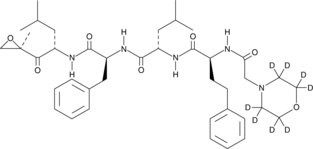
-
GN10733
Carnosic acid
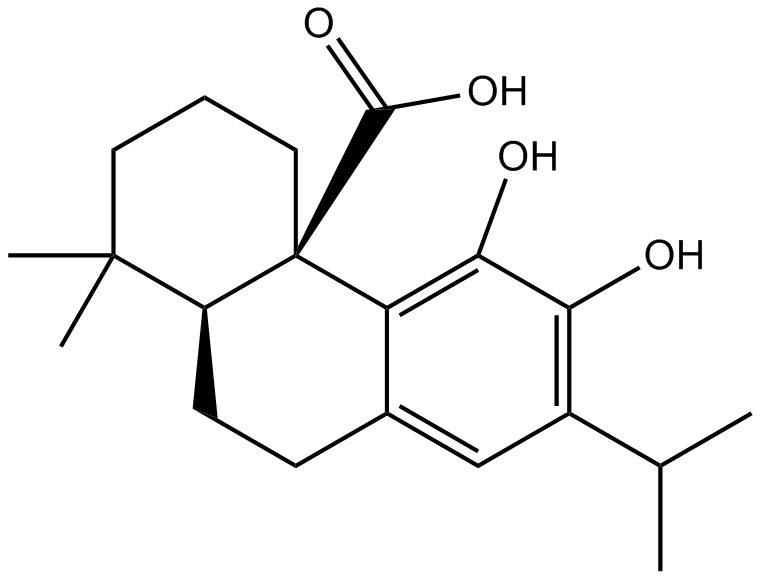
-
GC45679
Carubicin
La carubicine (carminomycine) est un composé d'origine microbienne.
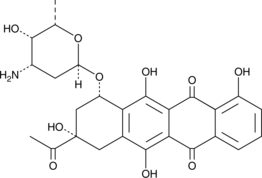
-
GC64110
Carubicin hydrochloride
Le chlorhydrate de carubicine est un composé d'origine microbienne.
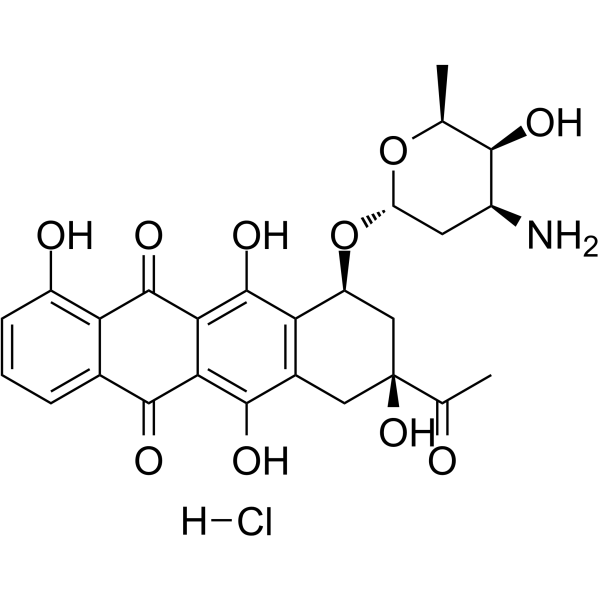
-
GC35612
Carvacrol
Le carvacrol est un phénol monoterpénoÏde isolé de Thymus mongolicus Ronn.
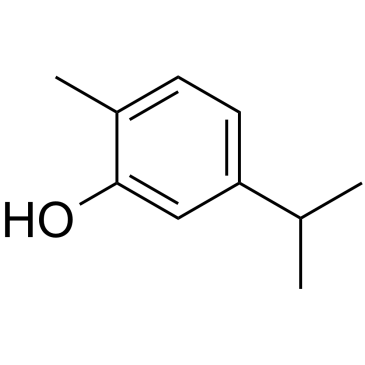
-
GC62442
Casein Kinase inhibitor A51
L'inhibiteur de caséine kinase A51 est un inhibiteur puissant et actif par voie orale de la caséine kinase 1α (CK1α). L'inhibiteur de caséine kinase A51 induit l'apoptose des cellules leucémiques et possède de puissantes activités anti-leucémiques.
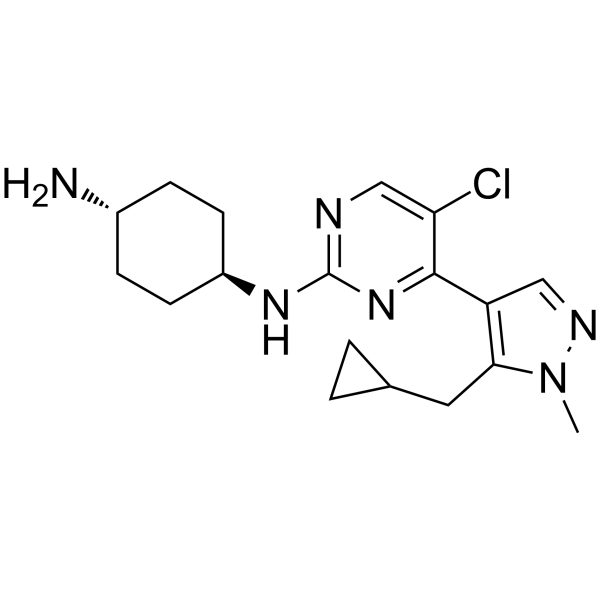
-
GC32841
Catechin ((+)-Catechin)
La catéchine ((+)-catéchine) ((+)-catéchine ((+)-catéchine)) inhibe la cyclooxygénase-1 (COX-1) avec une CI50 de 1,4 μM.
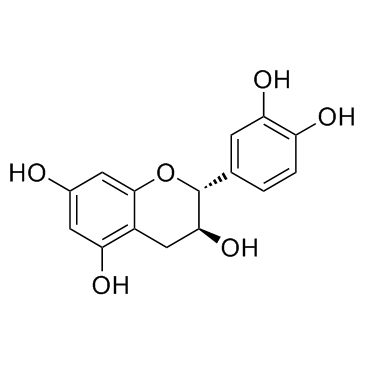
-
GN10543
caudatin
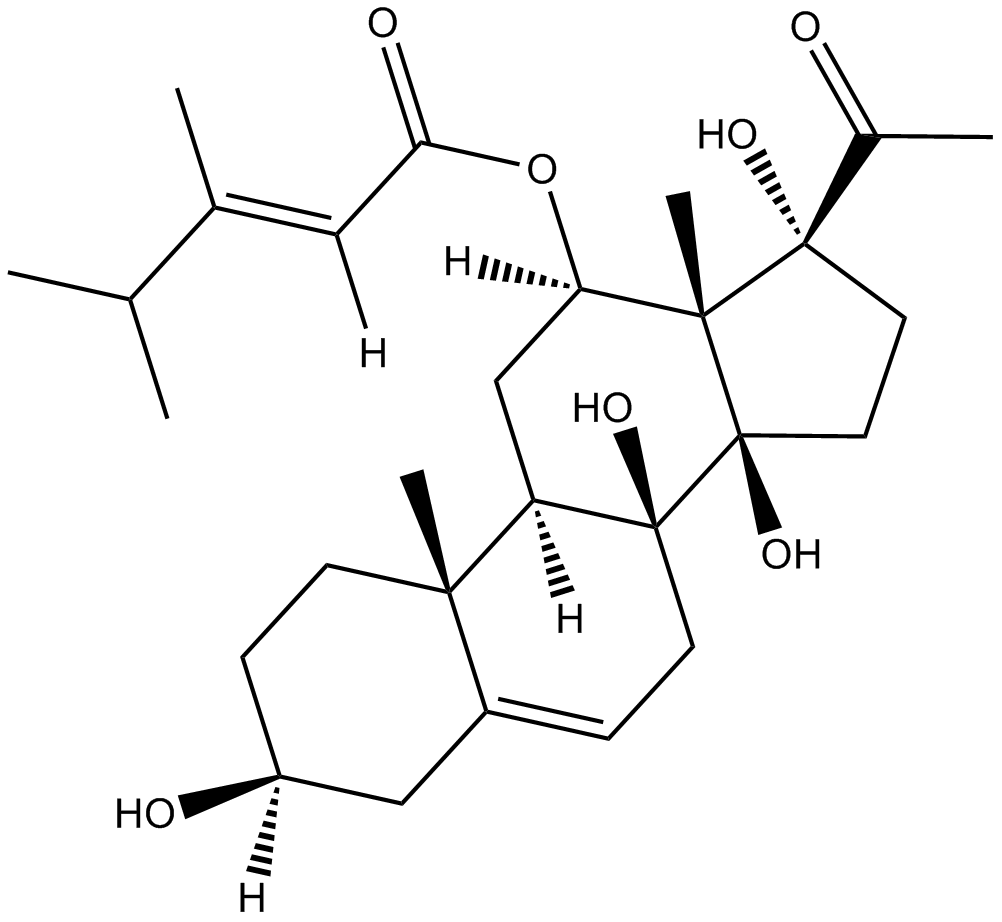
-
GC43149
CAY10404
CAY10404 est un inhibiteur puissant et sélectif de la cyclooxygénase-2 (COX-2) avec une IC50 de 1 nM et un indice de sélectivité (SI; COX-1 IC50/COX-2 IC50) >500000.
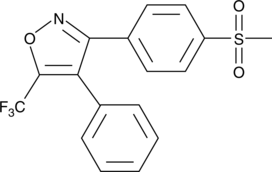
-
GC43150
CAY10406
CAY10406 is a trifluoromethyl analog of an isatin sulfonamide compound that selectively inhibits caspases 3 and 7.
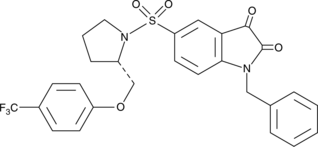
-
GC43154
CAY10443
Mitochondrial release of cytochrome c triggers apoptosis via the assembly of a multimeric complex including caspase-9, Apaf-1, and other components, sometimes called the apoptosome.

-
GC43176
CAY10575
CAY10575 (Composé 8) est un inhibiteur de IKK2 avec une IC50 de 0,075 μM.
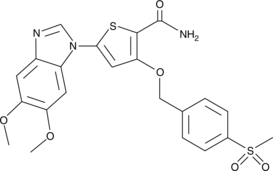
-
GC18530
CAY10616
Resveratrol is a natural polyphenolic antioxidant that has anti-cancer properties.
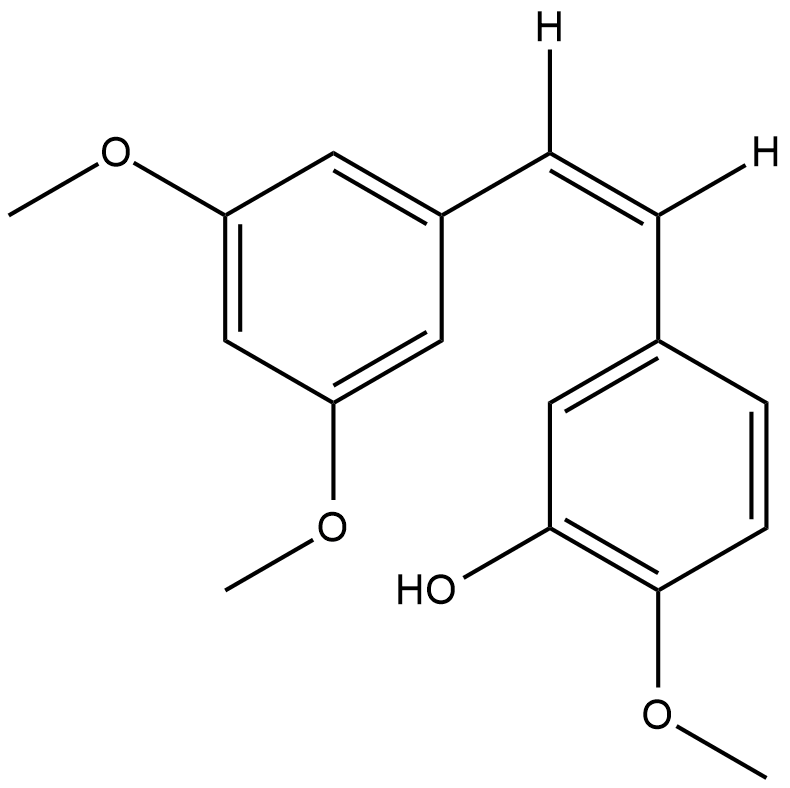
-
GC41317
CAY10625
Survivin is a cellular protein implicated in cell survival by interacting with and inhibiting the apoptotic function of several proteins including Smac/DIABLO, caspase-3, and caspase-7.
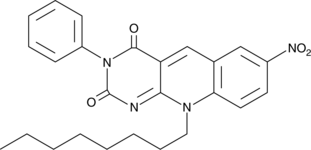
-
GC43189
CAY10681
Inactivation of the tumor suppressor p53 commonly coincides with increased signaling through NF-κB in cancer.
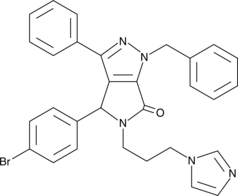
-
GC43190
CAY10682
(±)-Nutlin-3 blocks the interaction of p53 with its negative regulator Mdm2 (IC50 = 90 nM), inducing the expression of p53-regulated genes and blocking the growth of tumor xenografts in vivo.
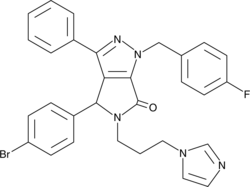
-
GC40650
CAY10706
CAY10706 is a ligustrazine-curcumin hybrid that promotes intracellular reactive oxygen species accumulation preferentially in lung cancer cells.

-
GC43198
CAY10717
CAY10717 is a multi-targeted kinase inhibitor that exhibits greater than 40% inhibition of 34 of 104 kinases in an enzymatic assay at a concentration of 100 nM.

-
GC43203
CAY10726
CAY10726 is an arylurea fatty acid.

-
GC46113
CAY10744
A topoisomerase II-α poison
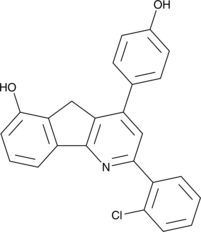
-
GC47053
CAY10746
A ROCK1 and ROCK2 inhibitor

-
GC48392
CAY10747
An inhibitor of the Hsp90-Cdc37 protein-protein interaction
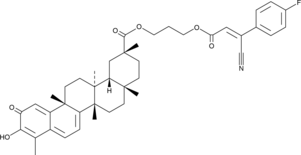
-
GC47055
CAY10749
Cay10749 (composé 15) est un puissant inhibiteur de PARP / PI3K avec des valeurs PIC50 de 8,22, 8,44, 8,25, 6,54, 8,13, 6,08 pour PARP-1, PARP-2, PI3Kα ;,, PI3Kβ ;, PI3K⋲ offlineefficient_models_2022q2.md.en_fr_2022q1.mdCAY10749 is a highly effective anticancer compound targeted against a wide range of oncologic diseases.en_fr_2022q1.md
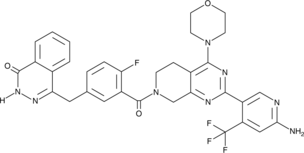
-
GC47057
CAY10755
A fungal metabolite with anticancer activity
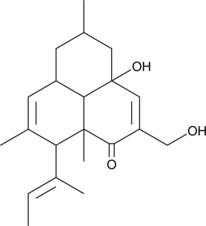
-
GC47061
CAY10763
A dual inhibitor of IDO1 and STAT3 activation
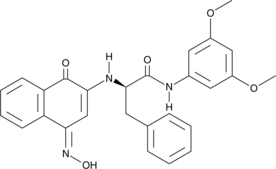
-
GC47065
CAY10773
A derivative of sorafenib
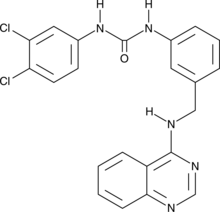
-
GC49080
CAY10786
CAY10786 (Composé 43) est un antagoniste du GPR52 avec une IC50 de 0,63 μM.

-
GC52245
CAY10792
An anticancer agent
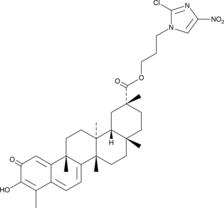
-
GC14634
CBL0137
curaxin that activates p53 and inhibits NF-κB
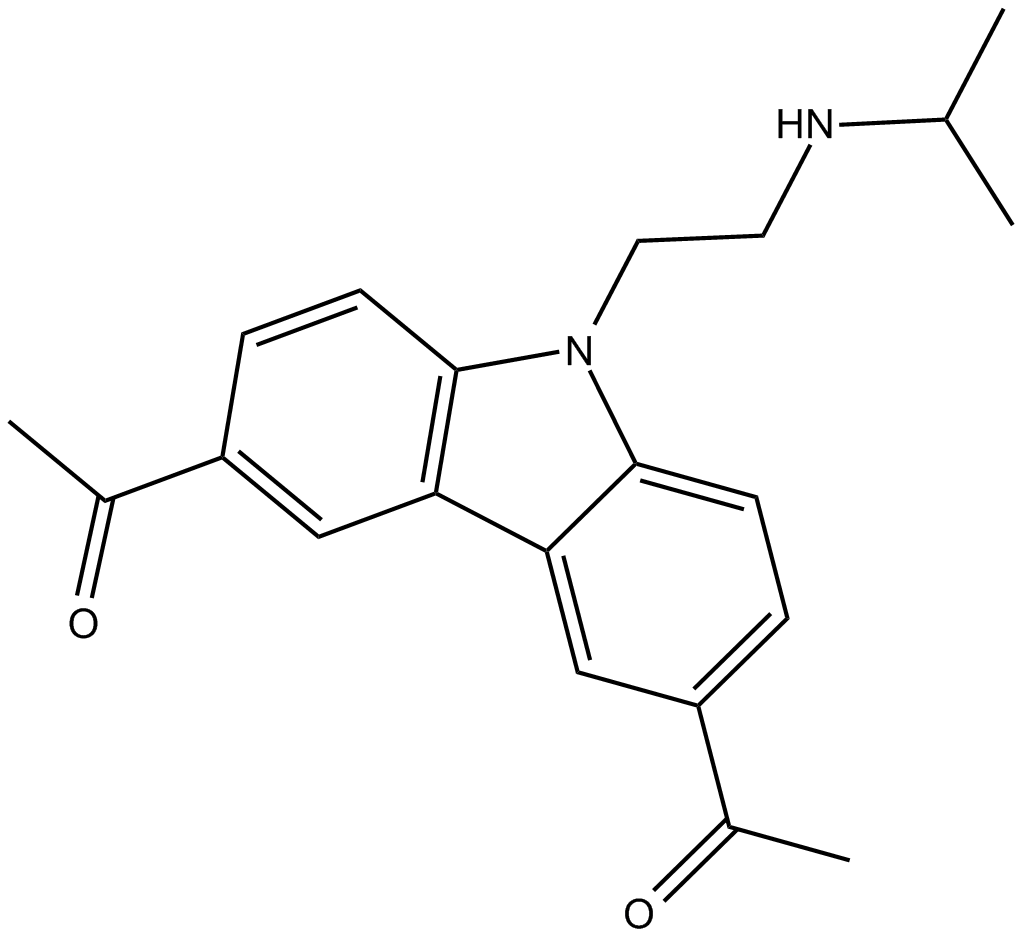
-
GC15394
CBL0137 (hydrochloride)
CBL0137 (chlorhydrate) est un inhibiteur de l'histone chaperon, FACT. CBL0137 (chlorhydrate) peut également activer p53 et inhiber NF-κB avec des CE50 de 0,37 et 0,47 µM, respectivement.
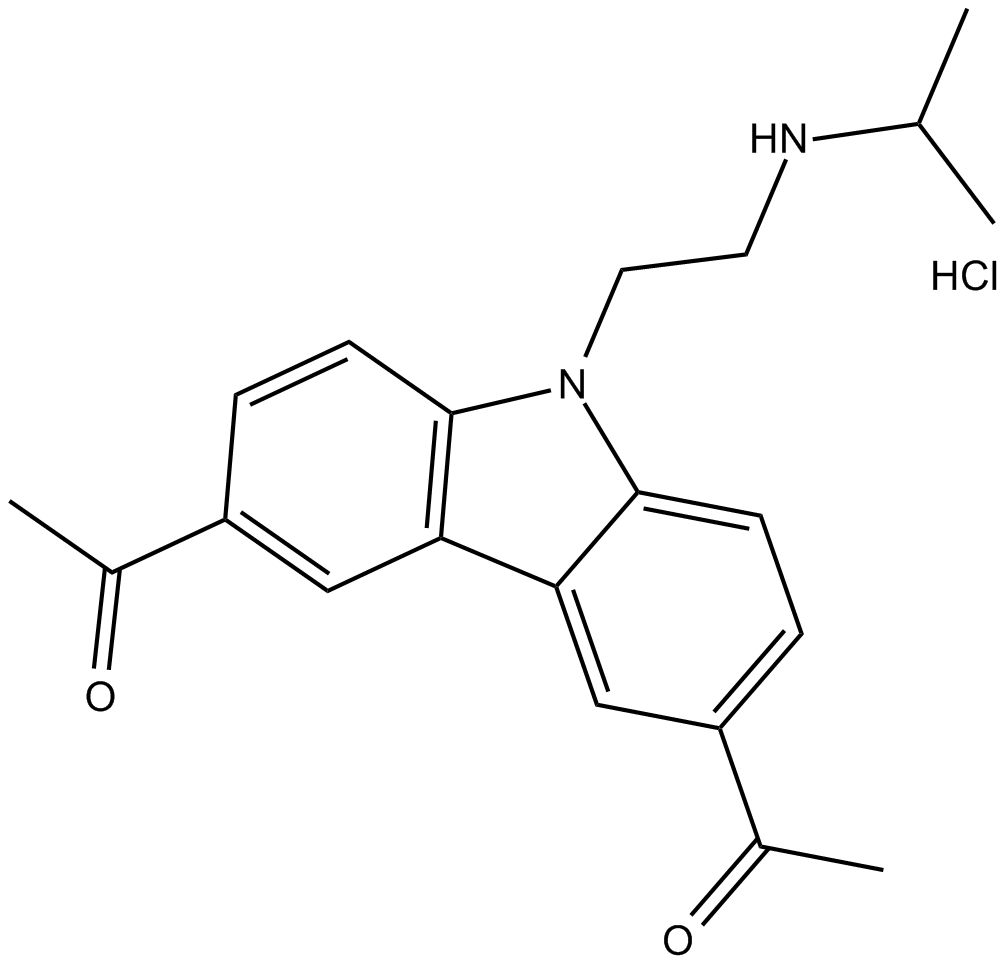
-
GC61636
CBR-470-2
CBR-470-2, un analogue substitué par la glycine, peut activer la signalisation NRF2.
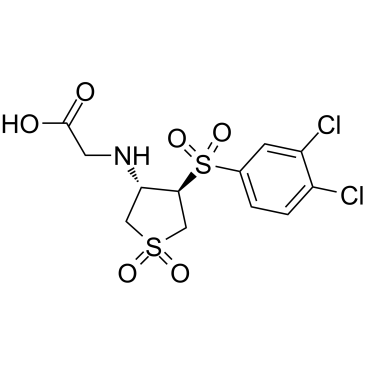
-
GC13648
CC-223
CC-223 (CC-223) est un inhibiteur puissant, sélectif et biodisponible par voie orale de la mTOR kinase, avec une valeur IC50 pour la mTOR kinase de 16 nM. CC-223 inhibe À la fois mTORC1 et mTORC2.
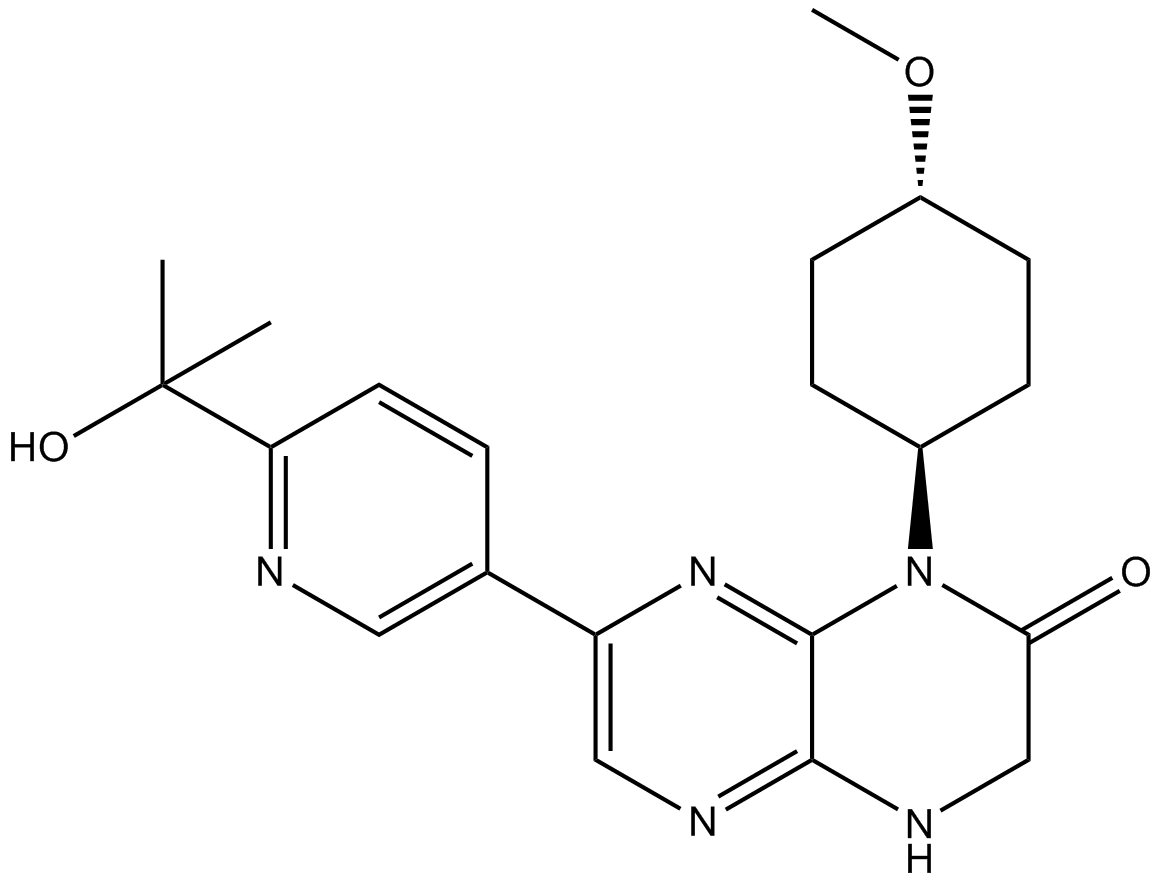
-
GC39169
CC-92480
CC-92480 (CC-92480), un médicament modulant l'ubiquitine ligase cereblon E3 (CELMoD), agit comme une colle moléculaire. Le CC-92480 présente une forte affinité pour le cereblon, ce qui se traduit par une puissante activité antimyélome.
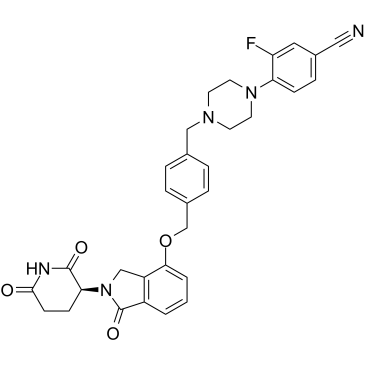
-
GC19088
CC122
CC122 (CC 122) est un modulateur de cereblon actif par voie orale.
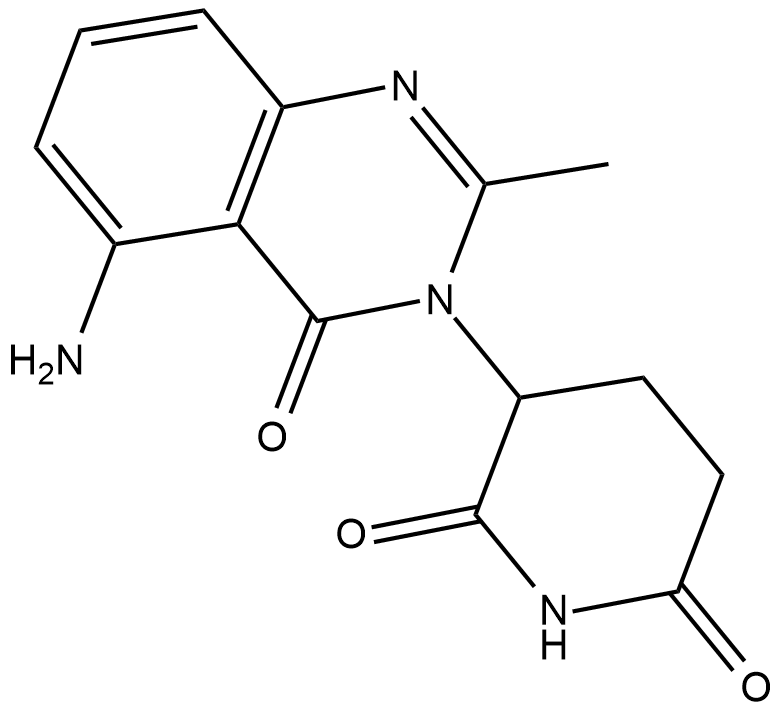
-
GC61532
CCI-007
CCI-007 est une petite molécule À activité cytotoxique contre la leucémie infantile avec réarrangements MLL, avec des valeurs IC50 de 2,5 À 6,2 μM dans les cellules sensibles.
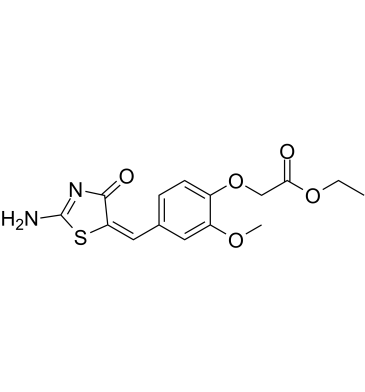
-
GC12891
CCT007093
CCT007093 est un inhibiteur efficace de la protéine phosphatase 1D (PPM1D Wip1). L'inhibition de Wip1 peut activer la voie mTORC1 et améliorer la prolifération des hépatocytes après une hépatectomie.
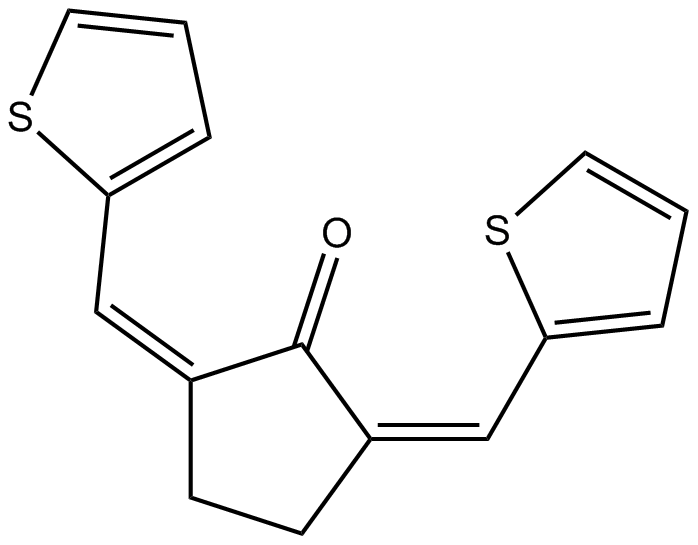
-
GC14566
CCT137690
An inhibitor of Aurora kinases and FLT3
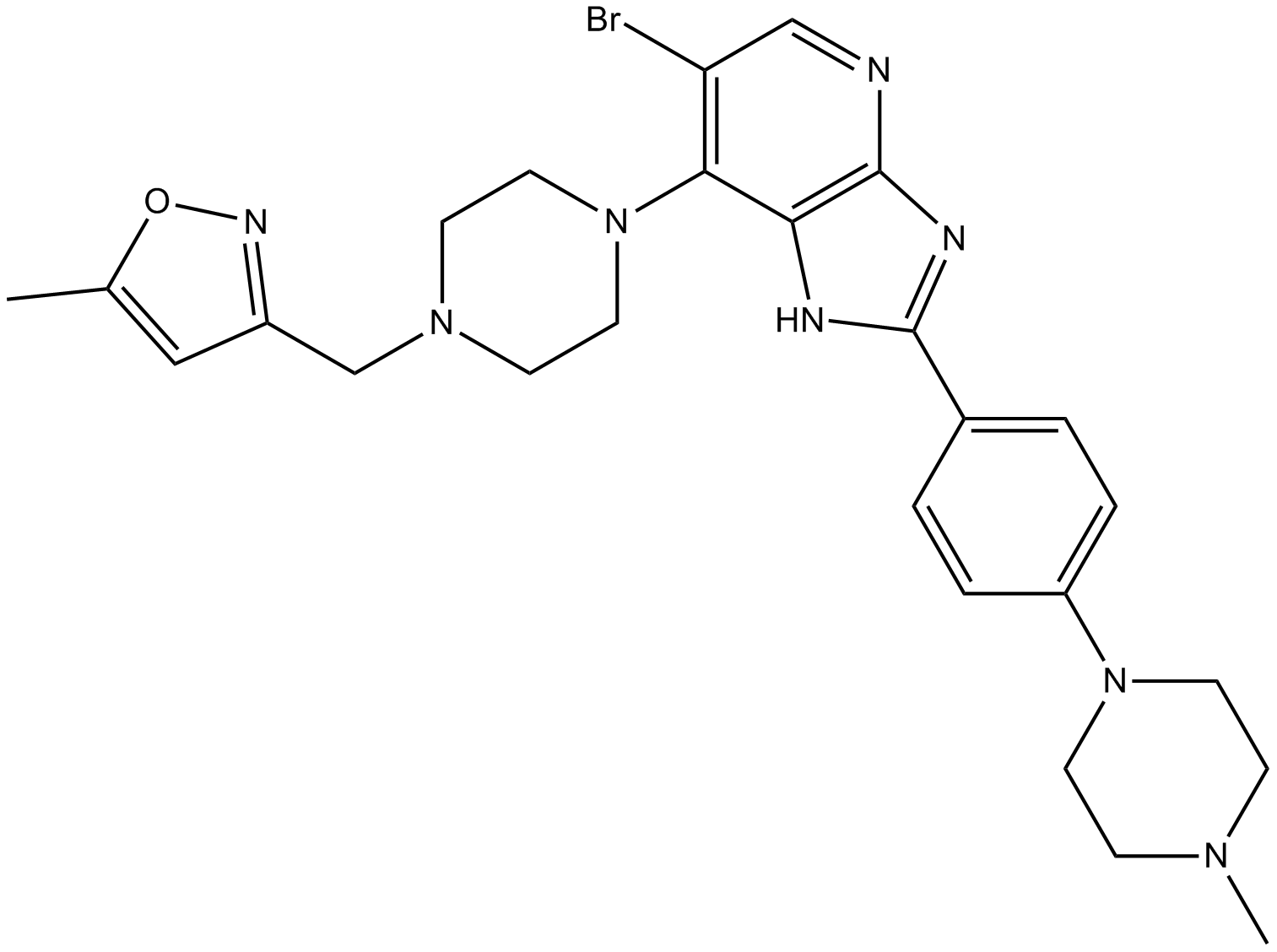
-
GC62561
CCT369260
CCT369260 (composé 1) est un inhibiteur oral du lymphome 6 À cellules B (BCL6) ayant une activité anti-tumorale. CCT369260 (composé 1) présente une IC50 de 520 nM.
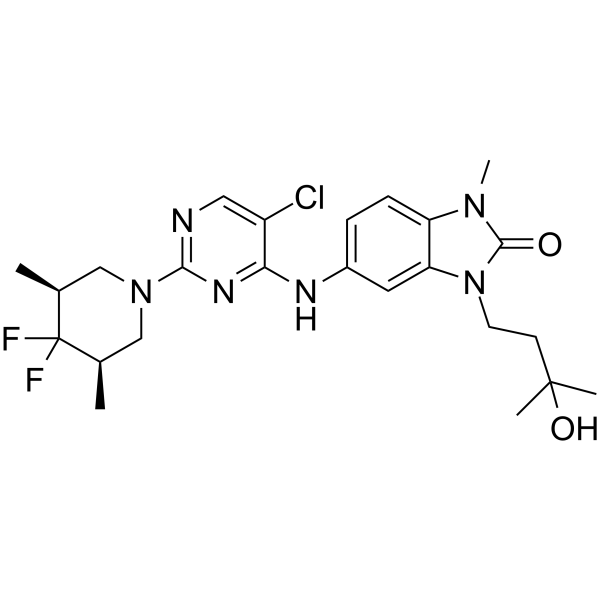
-
GC33337
CDC801
CDC801 est une phosphodiestérase 4 (PDE4) puissante et oralement active et un facteur de nécrose tumorale-α ; (TNF-α) avec IC50 de 1,1 μ M et 2,5 μ M, respectivement.
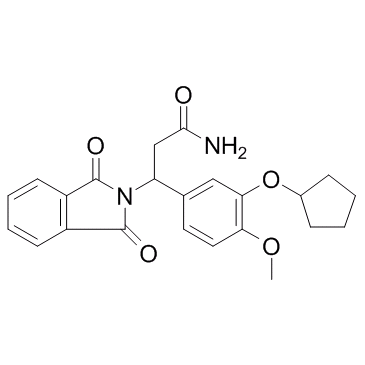
-
GC39555
CDDO-2P-Im
Le CDDO-2P-Im est un analogue du CDDO-Imidazolide À effet chimiopréventif. CDDO-2P-Im peut réduire la taille et la gravité des tumeurs pulmonaires dans le modèle de cancer du poumon chez la souris.
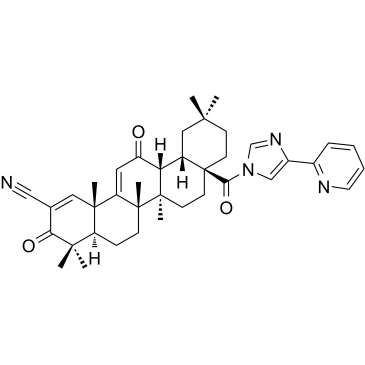
-
GC39556
CDDO-3P-Im
Le CDDO-3P-Im est un analogue du CDDO-Imidazolide À effet chimiopréventif. CDDO-3P-Im peut réduire la taille et la gravité des tumeurs pulmonaires dans le modèle de cancer du poumon chez la souris. CDDO-3P-Im est un inhibiteur de la nécroptose actif par voie orale qui peut être utilisé pour la recherche de l'ischémie/reperfusion (I/R).
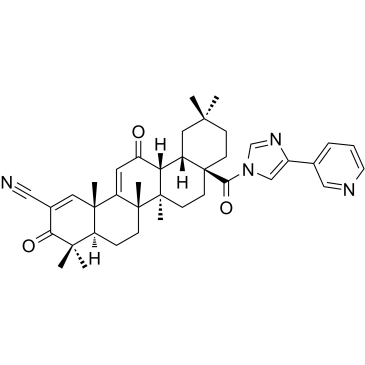
-
GC35629
CDDO-dhTFEA
CDDO-dhTFEA (RTA dh404) est un composé triterpénoÏde d'oléanane synthétique qui active puissamment Nrf2 et inhibe le facteur de transcription pro-inflammatoire NF-κB .
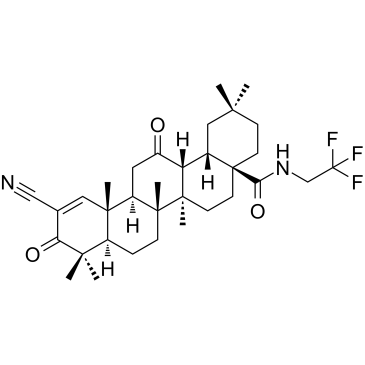
-
GC35630
CDDO-EA
Le CDDO-EA est un activateur du facteur 2/élément de réponse antioxydant (Nrf2/ARE) lié au NF-E2.

-
GC32723
CDDO-Im (RTA-403)
CDDO-Im (RTA-403) (RTA-403) est un activateur de Nrf2 et PPAR, avec Kis de 232 et 344 nM pour PPARα ; et PPARγ ;.
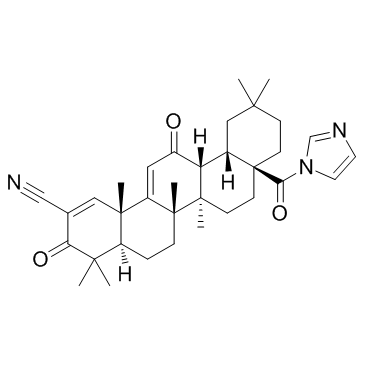
-
GC16625
CDDO-TFEA
Nrf2 activator
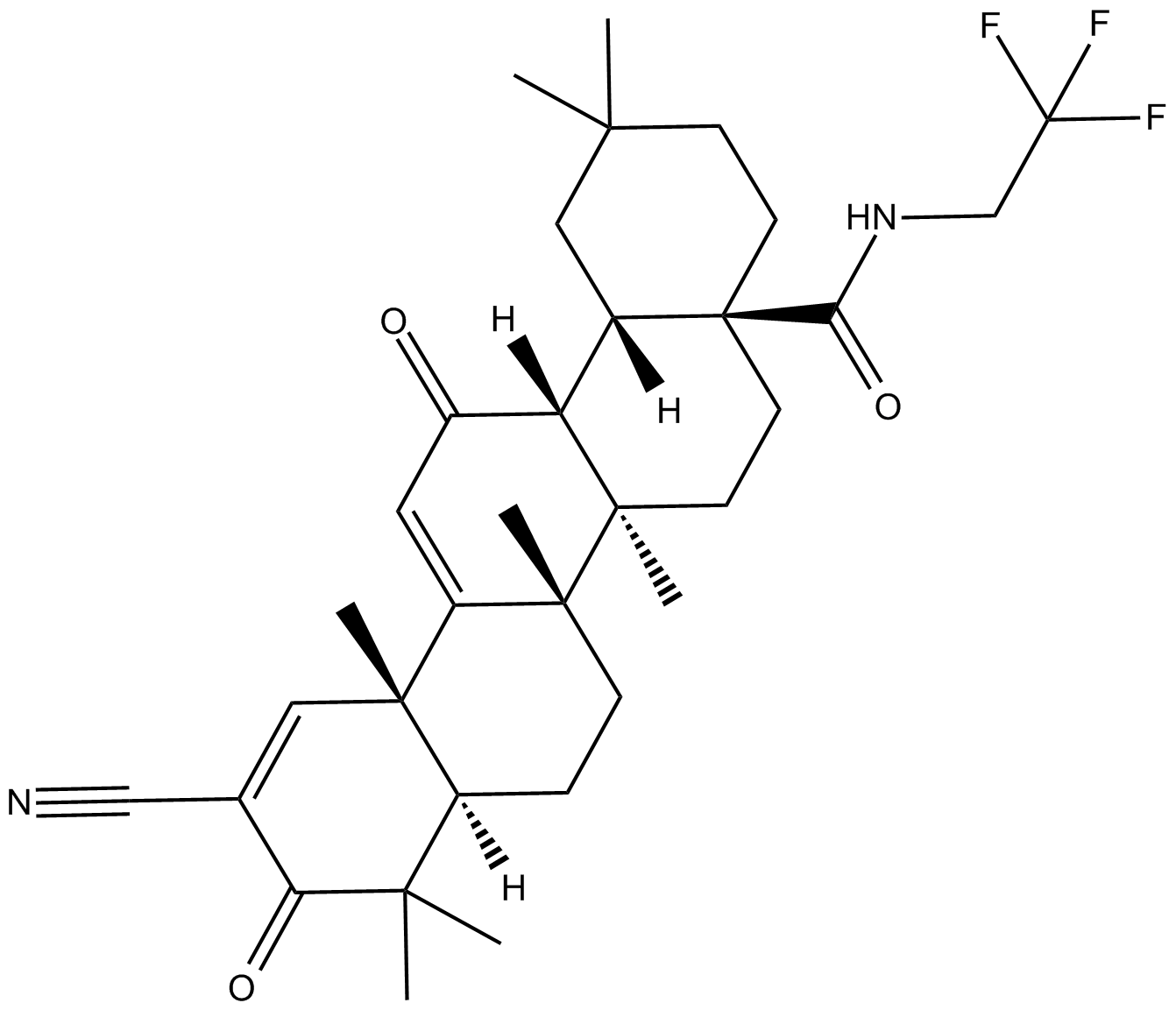
-
GC43217
CDK/CRK Inhibitor
CDK/CRK inhibitor is an inhibitor of cyclin-dependent kinases (CDK) and CDK-related kinases (CRK) with IC50 values ranging from 9-839 nM in vitro.
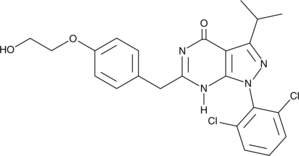
-
GC62596
CDK7-IN-3
CDK7-IN-3 (CDK7-IN-3) est un inhibiteur de CDK7 oralement actif, hautement sélectif et non covalent avec un KD de 0,065 nM. CDK7-IN-3 montre une faible inhibition sur CDK2 (Ki = 2600 nM), CDK9 (Ki = 960 nM), CDK12 (Ki = 870 nM). CDK7-IN-3 induit l'apoptose dans les cellules tumorales et possède une activité antitumorale.
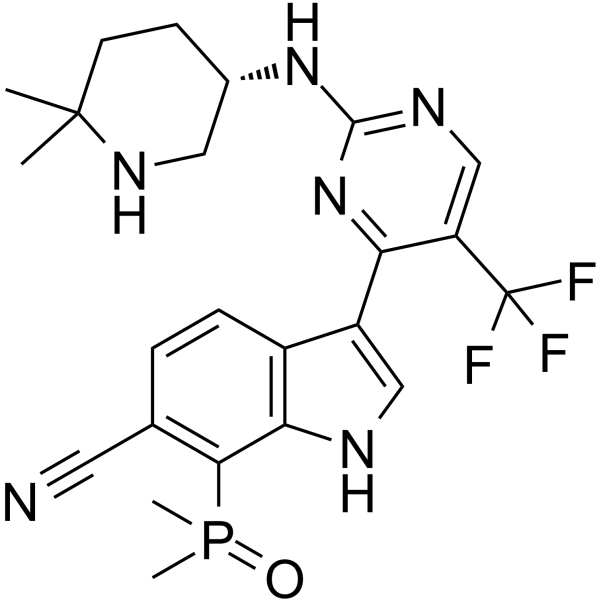
-
GC35636
CDK9-IN-7
CDK9-IN-7 (composé 21e) est un inhibiteur sélectif, très puissant et oralement actif de CDK9/cycline T (IC50 = 11 nM), qui présente plus de puissance que les autres CDK (CDK4/cyclinD = 148 nM; CDK6/cyclinD = 145 nM). CDK9-IN-7 montre une activité antitumorale sans toxicité évidente. CDK9-IN-7 induit l'apoptose des cellules NSCLC, arrête le cycle cellulaire en phase G2 et supprime les propriétés de souche du NSCLC.
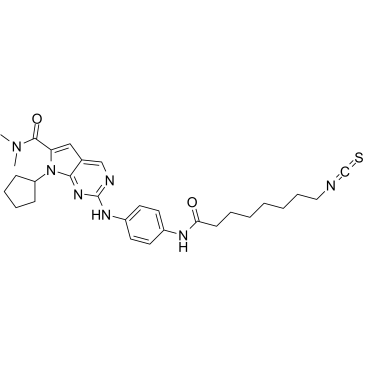
-
GC19096
CDKI-73
CDKI-73 (LS-007) est un inhibiteur de CDK9 actif par voie orale et très efficace, avec des valeurs Ki de 4 nM, 4 nM et 3 nM pour CDK9, CDK1 et CDK2, respectivement.
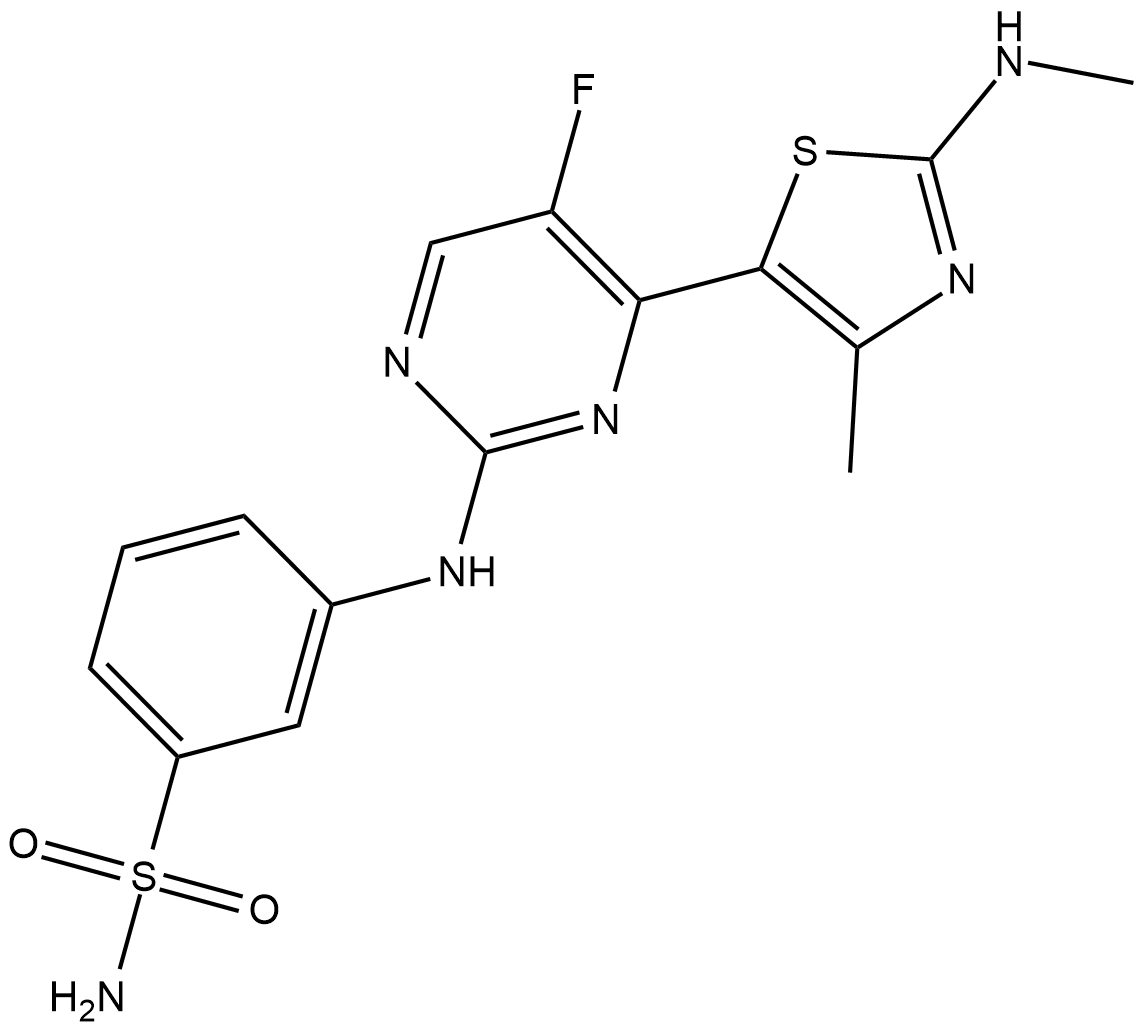
-
GC61865
Cearoin
Cearoin augmente l'autophagie et l'apoptose par la production de ROS et l'activation de ERK.
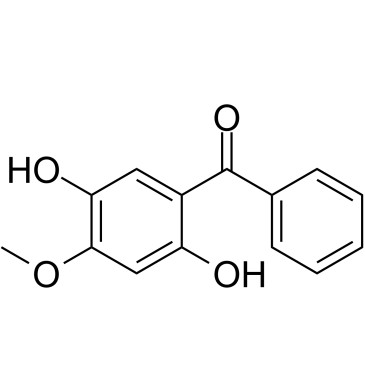
-
GC15083
Celastrol
A triterpenoid antioxidant
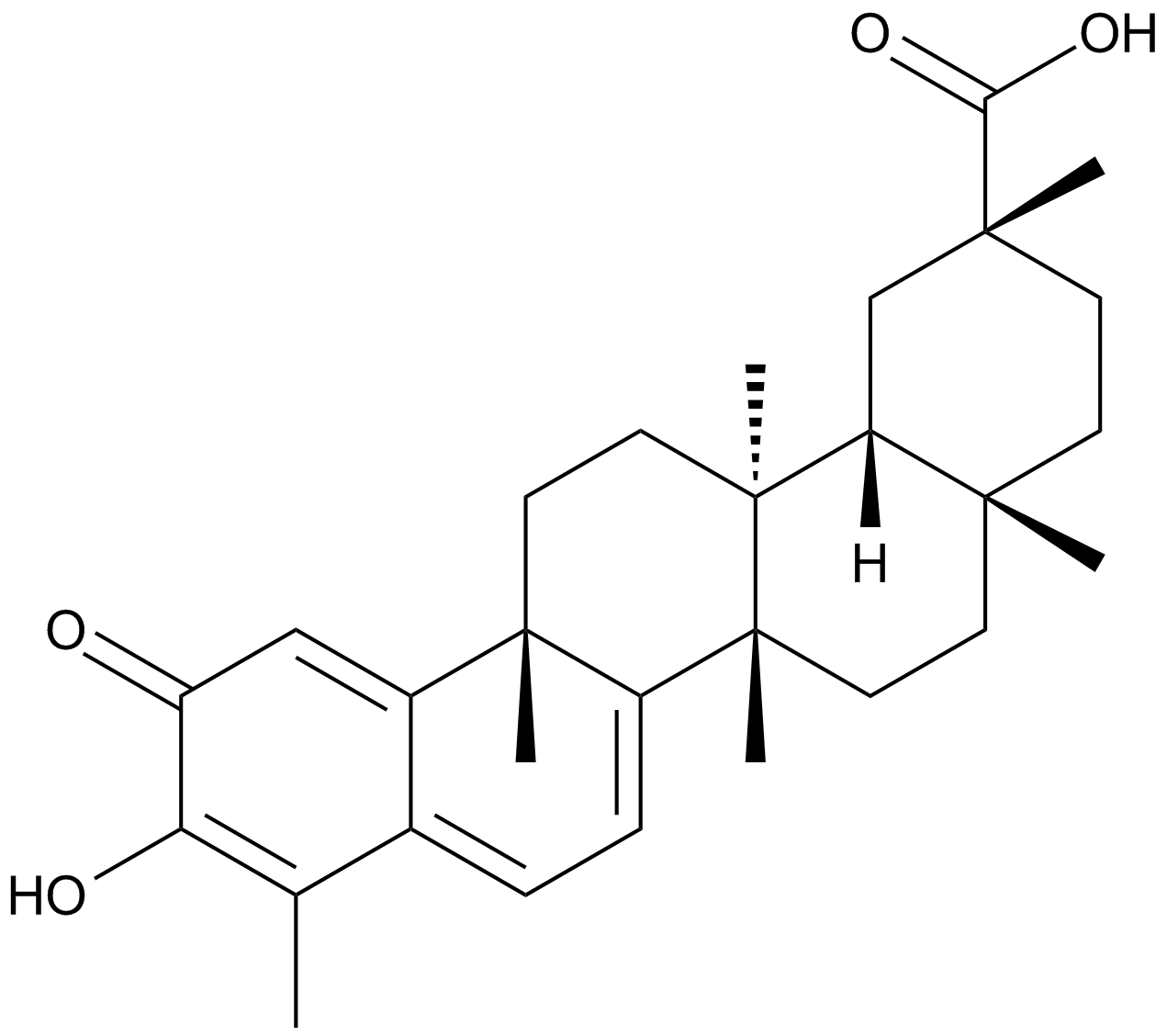
-
GC49152
Celecoxib Carboxylic Acid
An inactive metabolite of celecoxib
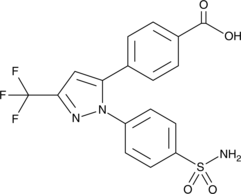
-
GC47070
Celecoxib-d7
An internal standard for the quantification of celecoxib
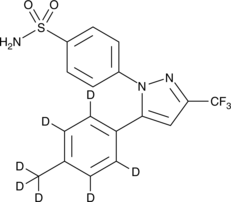
-
GC18392
Cellocidin
Cellocidin is an antibiotic originally isolated from S.
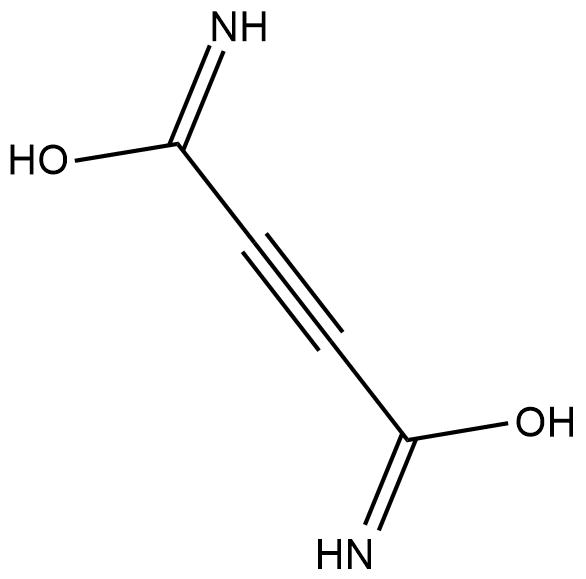
-
GN10113
Cepharanthine
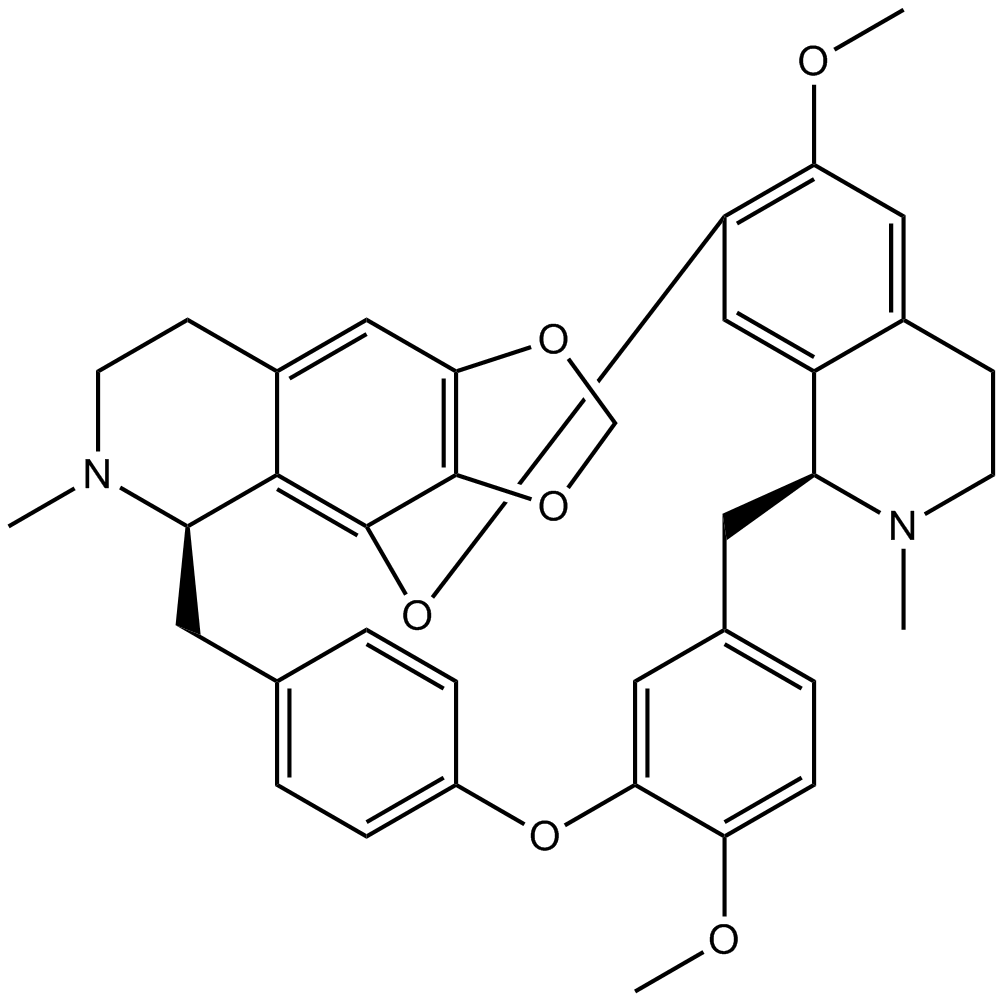
-
GC52489
Ceramide (hydroxy) (bovine spinal cord)
A sphingolipid

-
GC52485
Ceramide (non-hydroxy) (bovine spinal cord)
A sphingolipid
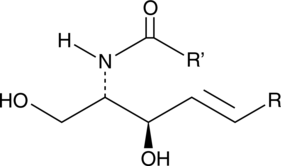
-
GC52486
Ceramide Phosphoethanolamine (bovine)
A sphingolipid

-
GC43229
Ceramide Phosphoethanolamines (bovine)
Ceramide phosphoethanolamine (CPE) is an analog of sphingomyelin that contains ethanolamine rather than choline as the head group.

-
GC47073
Ceramides (hydroxy)
A mixture of hydroxy fatty acid-containing ceramides

-
GC43230
Ceramides (non-hydroxy)
Ceramides are generated from sphingomyelin through activation of sphingomyelinases or through the de novo synthesis pathway, which requires the coordinated action of serine palmitoyl transferase and ceramide synthase.
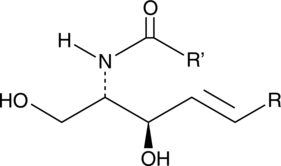
-
GC49706
Cerberin
A cardiac glycoside with cytotoxic and cardiac modulatory activities
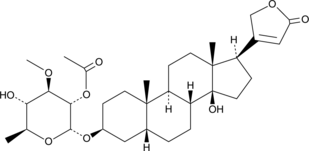
-
GC60688
Cereblon modulator 1
Le modulateur Cereblon 1 (CC-90009) est un premier modulateur de ligase cereblon sélectif GSPT1 (CRBN) E3, agit comme une colle moléculaire.
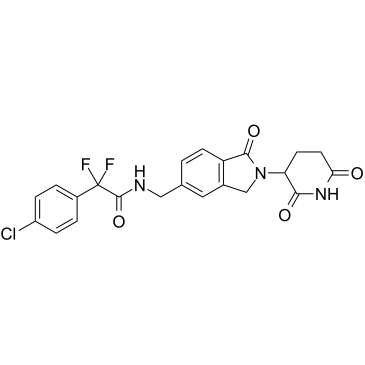
-
GC65487
Certolizumab pegol
Certolizumab pegol (Certolizumab) est un fragment de liaison à l'antigène recombinant, polyéthylène glycolylé, d'un anticorps monoclonal humanisé qui cible et neutralise sélectivement le facteur de nécrose tumorale-α (TNF-α).
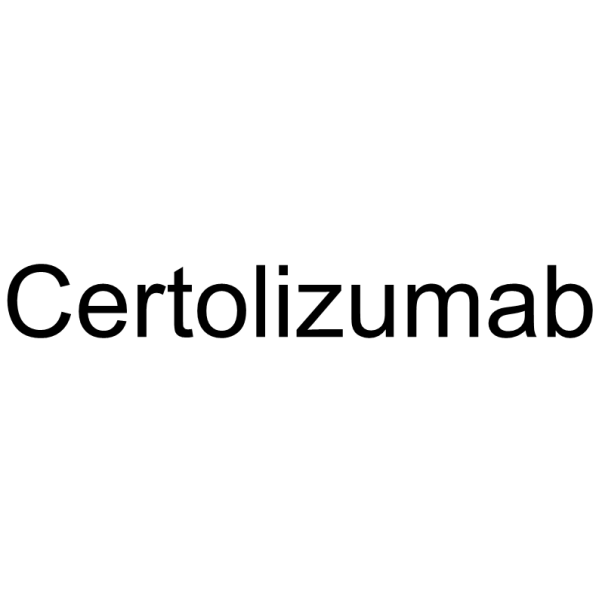
-
GC11543
Cesium chloride
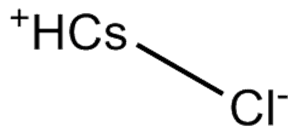
-
GC11710
CFM 4
CFM 4 est un puissant petit antagoniste moléculaire de la liaison CARP-1/APC-2. CFM 4 empêche la liaison de CARP-1 avec APC-2, provoque l'arrêt du cycle cellulaire G2M et induit l'apoptose avec une plage IC50 de 10-15 μM. Le CFM 4 supprime également la croissance des cellules cancéreuses du sein humaines résistantes aux médicaments.
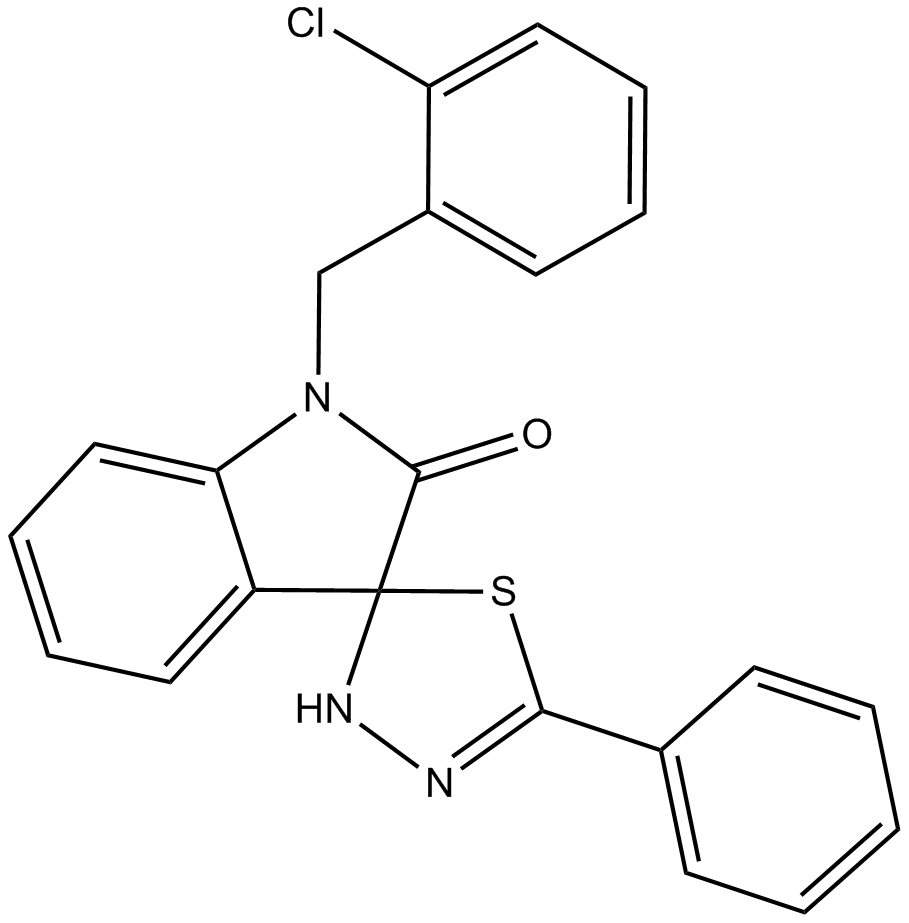
-
GC35668
CG-200745
Le CG-200745 (CG-200745) est un puissant inhibiteur pan-HDAC actif par voie orale qui possède la fraction acide hydroxamique pour lier le zinc au fond de la poche catalytique. CG-200745 inhibe la désacétylation de l'histone H3 et de la tubuline. CG-200745 induit l'accumulation de p53, favorise la transactivation dépendante de p53 et améliore l'expression des protéines MDM2 et p21 (Waf1/Cip1). CG-200745 améliore la sensibilité des cellules résistantes À la gemcitabine À la gemcitabine et au 5-fluorouracile (5-FU; ). Le CG-200745 induit l'apoptose et a des effets anti-tumoraux.
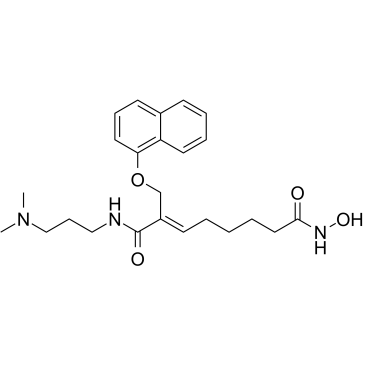
-
GC10666
CGP 57380
Le CGP 57380 est un composé pyrazolo-pyrimidine perméable aux cellules qui agit comme un inhibiteur sélectif de Mnk1 avec une IC50 de 2,2 μM, mais n'a aucune activité inhibitrice contre les kinases de type p38, JNK1, ERK1/2, PKC ou Src.
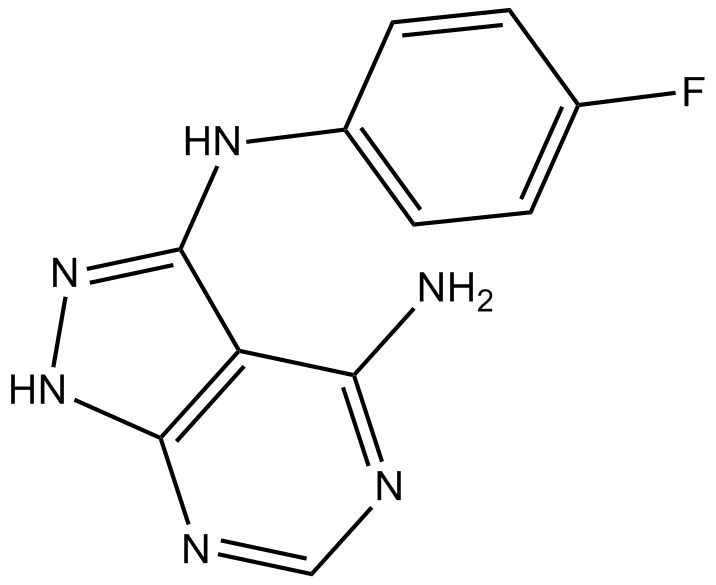
-
GC43234
Chaetoglobosin A
La chaetoglobosine A, principe actif de l'extrait de Penicillium aquamarinium, fait partie de la famille des cytochalasanes.
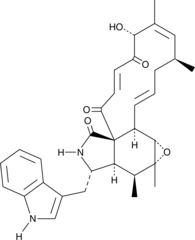
-
GC18536
Chartreusin
Chartreusin is an antibiotic originally isolated from S.
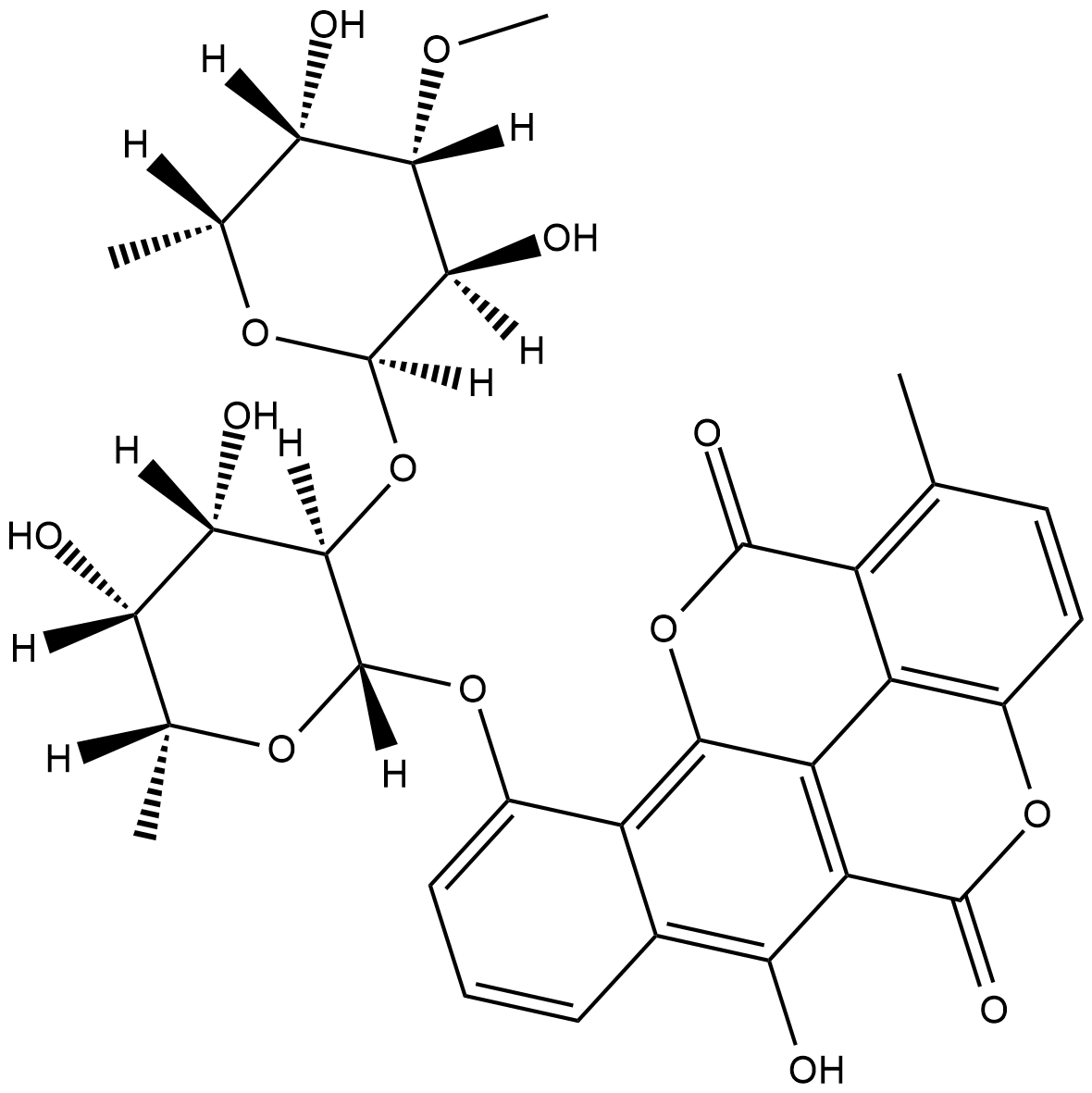
-
GN10463
Chelerythrine
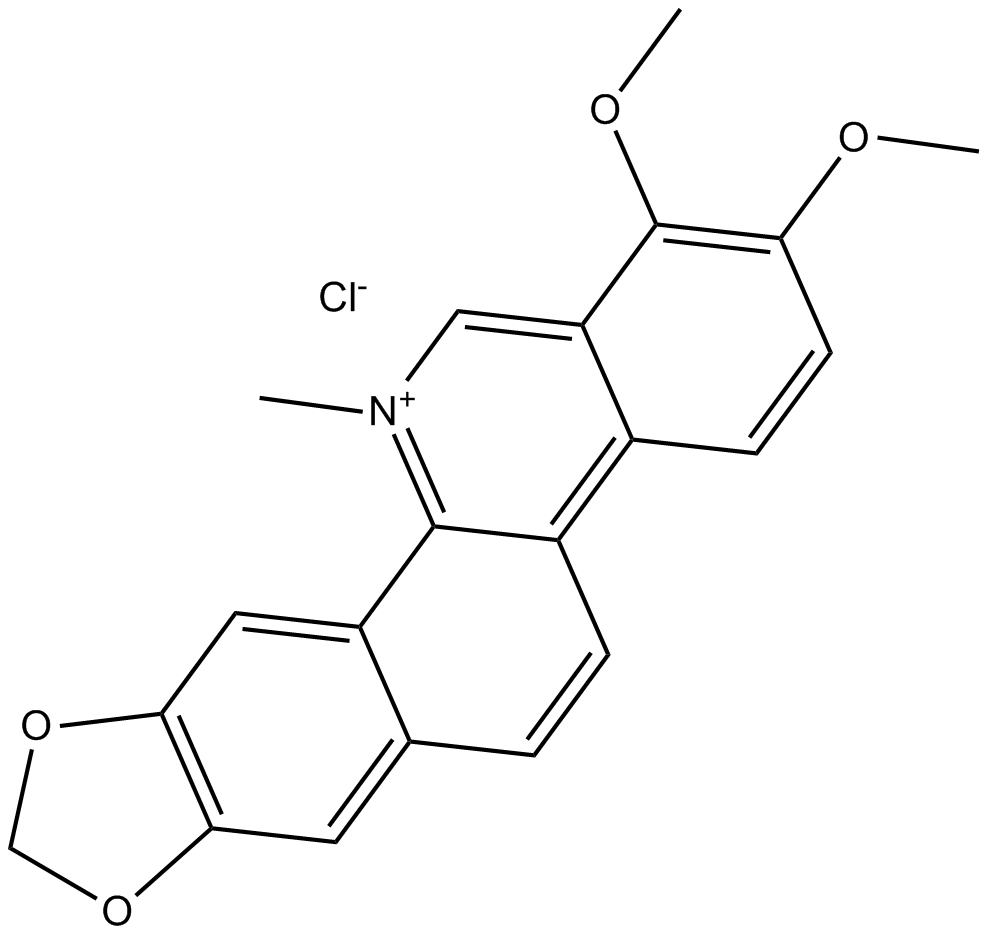
-
GC13065
Chelerythrine Chloride
Potent inhibitor of PKC and Bcl-xL
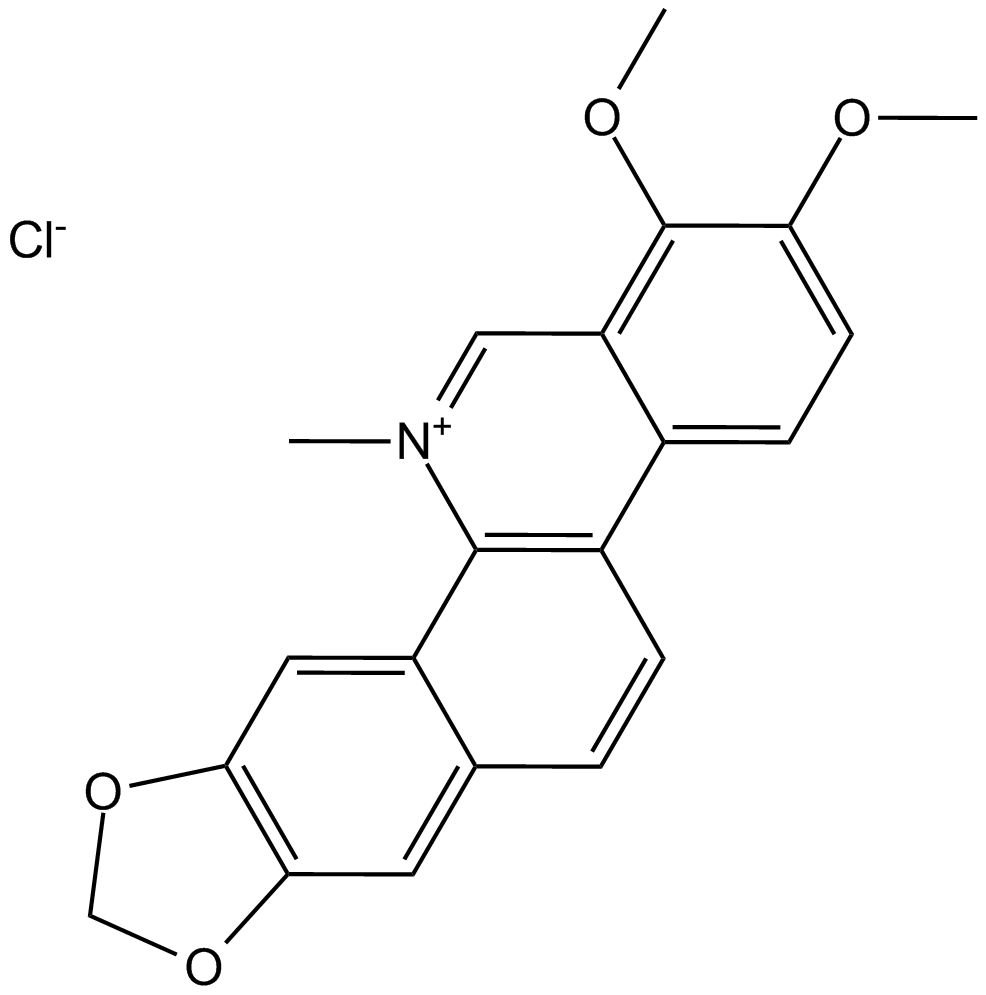
-
GC31886
Chelidonic acid
L'acide chélidonique est un composant de Chelidonium majus L.
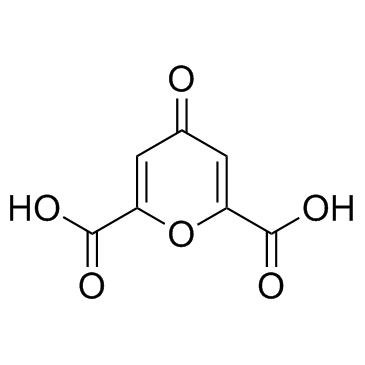
-
GC40878
Chelidonine
La chélidonine est un alcaloÏde isoquinoline, peut être isolé de Chelidonium majus L.
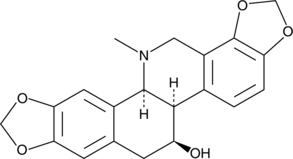
-
GC43236
Chevalone B
Chevalone B is a meroterpenoid originally isolated from the fungus E.
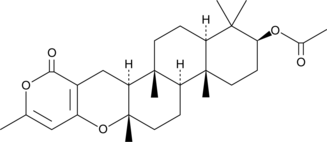
-
GC43237
Chevalone C
Chevalone C, un métabolite fongique méroterpénoÏde, présente une activité antipaludique avec une valeur IC50 de 25,00 μg/mL.
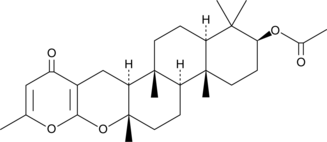
-
GC64993
Chicoric acid
L'acide chicorique (acide cichorique), un acide dicaffeyltartrique actif par voie orale, induit la génération d'espèces réactives de l'oxygène (ROS).
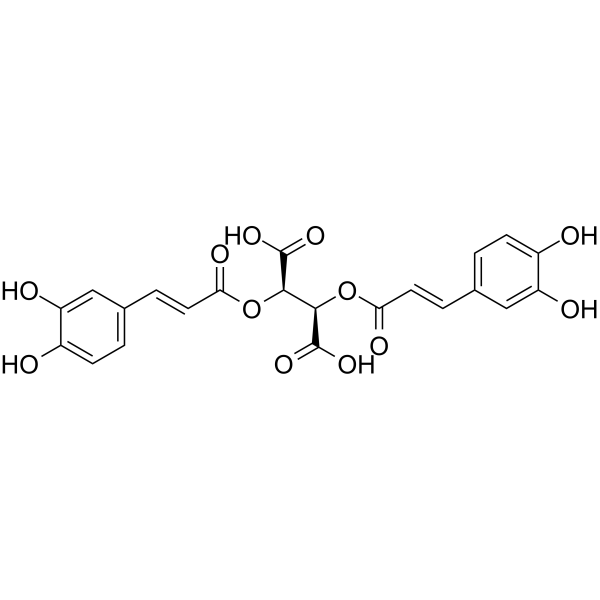
-
GC15739
CHIR-124
CHIR-124 est un inhibiteur puissant et sélectif de Chk1 avec une IC50 de 0,3 nM, et cible également puissamment PDGFR et FLT3 avec des IC50 de 6,6 nM et 5,8 nM.
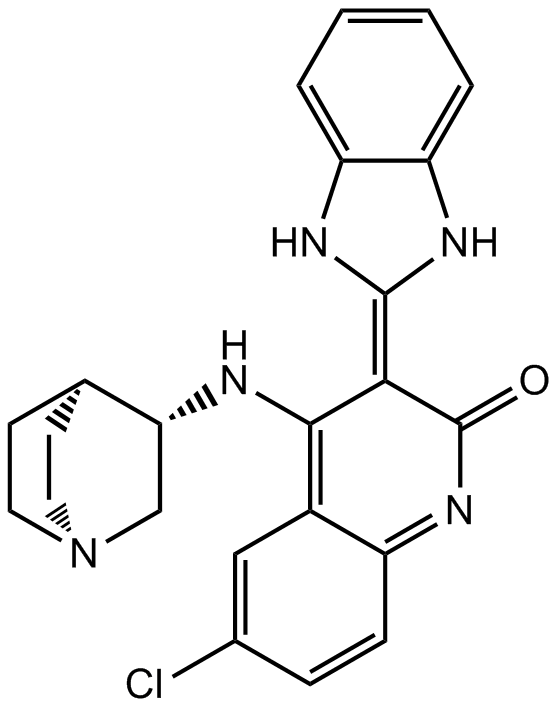
-
GC43239
Chk2 Inhibitor
L'inhibiteur de Chk2 (composé 1) est un inhibiteur puissant et sélectif de la kinase de point de contrÔle 2 (Chk2), avec des IC50 de 13,5 nM et 220,4 nM pour Chk2 et Chk1, respectivement. L'inhibiteur de Chk2 peut provoquer un fort effet de radioprotection médié par Chk2 dépendant de l'ataxie télangiectasie (ATM).
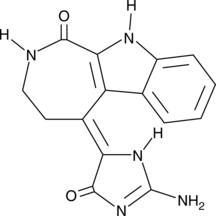
-
GC45717
Chlamydocin
La chlamydocine, un métabolite fongique, est un inhibiteur d'HDAC très puissant, avec une CI50 de 1,3 nM. La chlamydocine présente de puissantes activités antiprolifératives et anticancéreuses. La chlamydocine induit l'apoptose en activant la caspase-3.
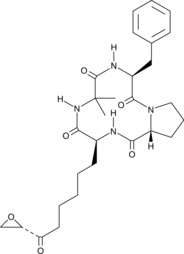
-
GC17969
CHM 1
An inhibitor of tubulin polymerization
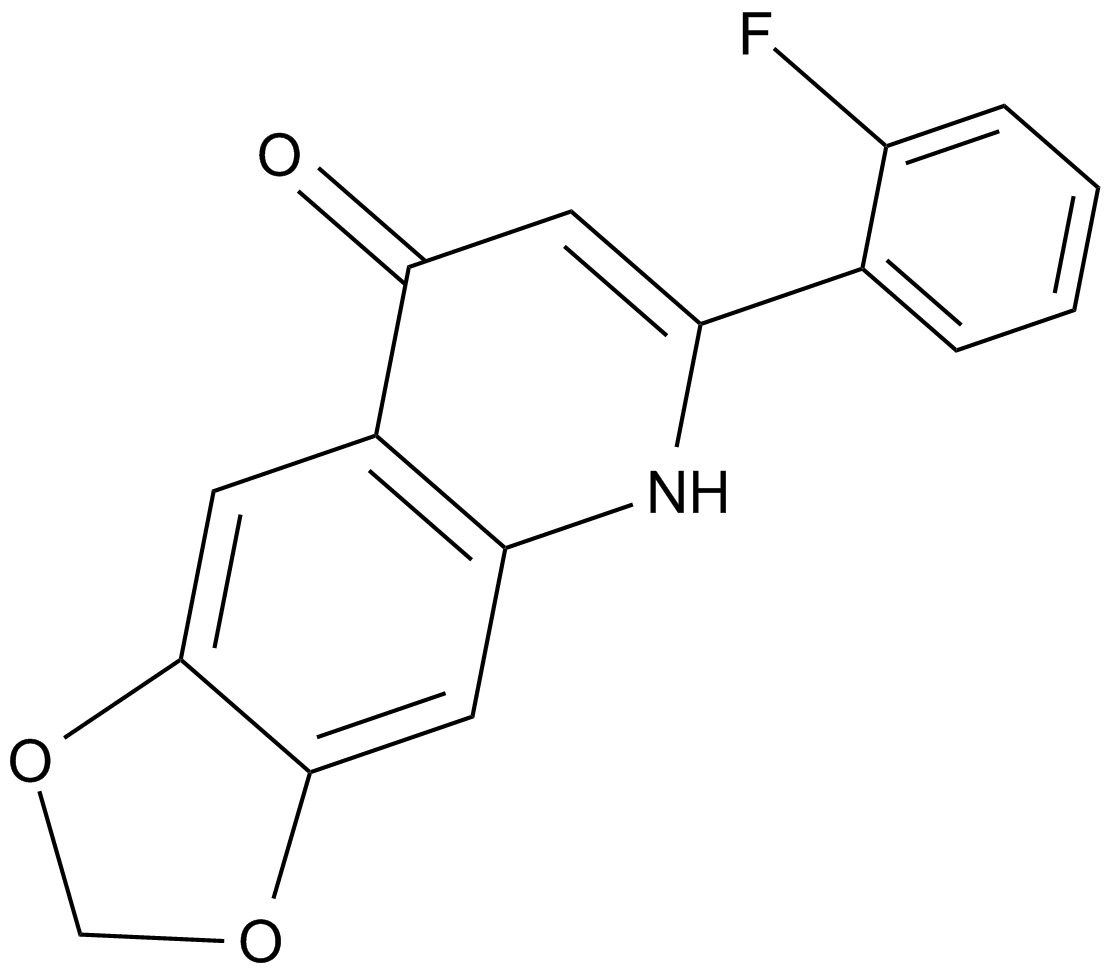
-
GC35682
CHMFL-ABL/KIT-155
CHMFL-ABL/KIT-155 (CHMFL-ABL-KIT-155; composé 34) est un inhibiteur de la double kinase ABL/c-KIT de type II très puissant et oralement actif (CI50 de 46nM et 75nM, respectivement), et il présente également des activités inhibitrices significatives sur BLK (IC50 = 81 nM), CSF1R (IC50 = 227 nM), DDR1 (IC50 = 116 nM), DDR2 (IC50 = 325 nM), LCK (IC50 = 12 nM) et PDGFRβ (IC50 = 80 nM) kinases. CHMFL-ABL/KIT-155 (CHMFL-ABL-KIT-155) arrête la progression du cycle cellulaire et induit l'apoptose.
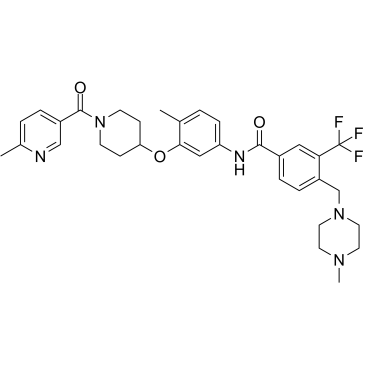
-
GC64028
Chrysosplenol D
Le chrysosplénol D est un flavonoÏde méthoxy qui induit l'apoptose médiée par ERK1/2 dans les cellules cancéreuses du sein humaines triple négatives.
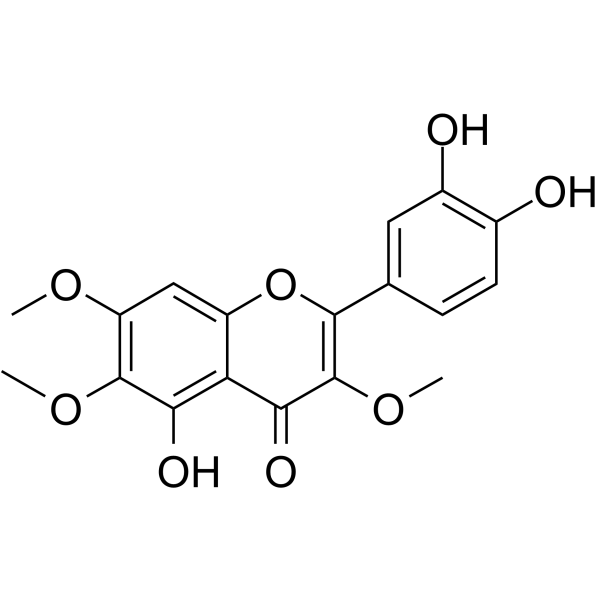
-
GC13408
CI994 (Tacedinaline)
An inhibitor of HDAC1, -2, and -3
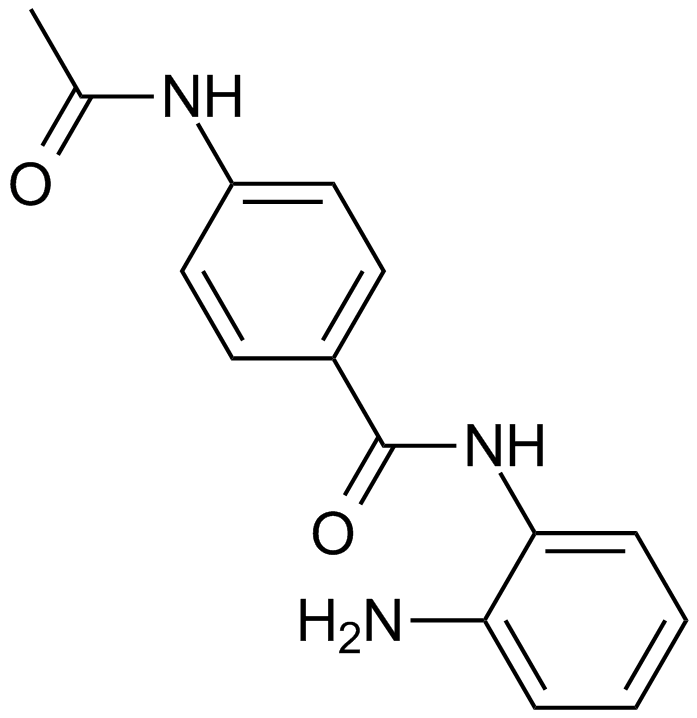
-
GC13589
CID 755673
Le CID 755673 est un puissant inhibiteur de la PKD avec des CI50 de 182 nM, 280 nM et 227 nM pour PKD1, PKD2 et PKD3, respectivement.
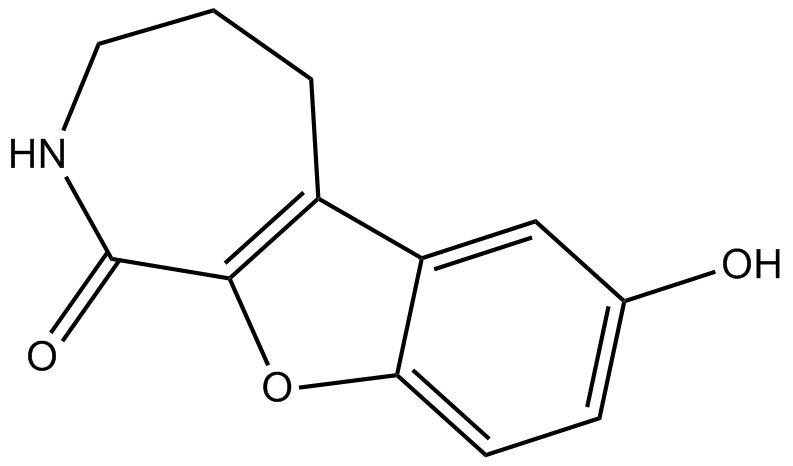
-
GC19436
CID-5721353
Le CID-5721353 est un inhibiteur de BCL6 avec une valeur IC50 de 212 μM, ce qui correspond à un Ki de 147 μM.
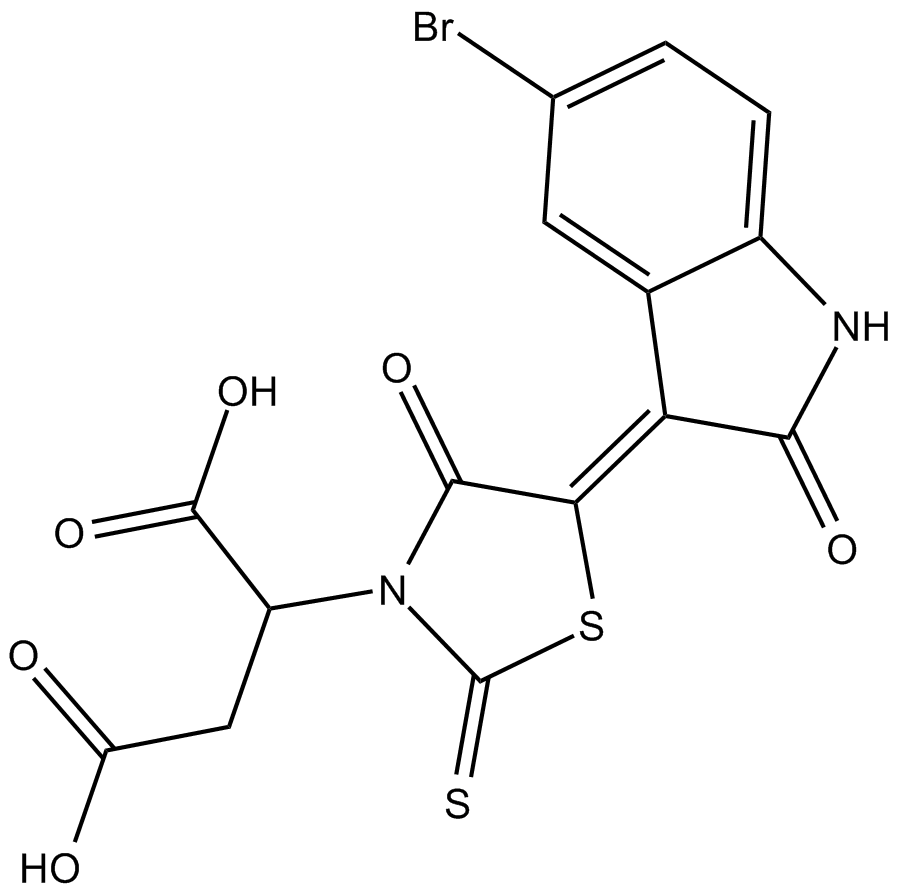
-
GC32997
Cinchonine ((8R,9S)-Cinchonine)
La cinchonine ((8R,9S)-Cinchonine) est un composé naturel présent dans l'écorce de quinquina. La cinchonine ((8R,9S)-Cinchonine) active l'apoptose induite par le stress du réticulum endoplasmique dans les cellules cancéreuses du foie humain.
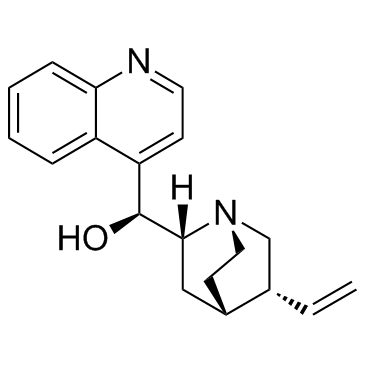
-
GC60708
Cinchonine hydrochloride
Le chlorhydrate de cinchonine ((8R,9S)-chlorhydrate de cinchonine) est un alcaloÏde naturel présent dans l'écorce de quinquina, avec une activité antipaludique. Le chlorhydrate de cinchonine active l'apoptose induite par le stress du réticulum endoplasmique (ER) dans les cellules cancéreuses du foie humain.
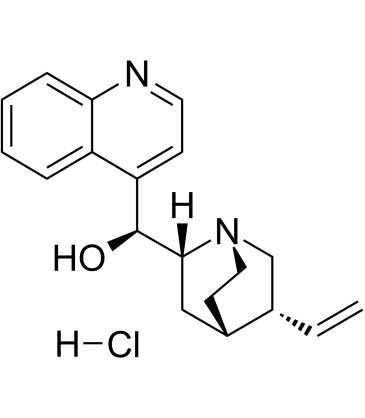
-
GC52269
Cinnabarinic Acid-d4
An internal standard for the quantification of cinnabarinic acid
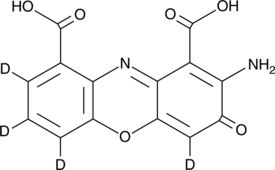
-
GC40986
Cinnamamide
Cinnamamide is an amide form of of trans-cinnamic acid and a metabolite of Streptomyces.
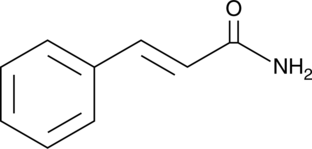
-
GN10189
Cinobufagin
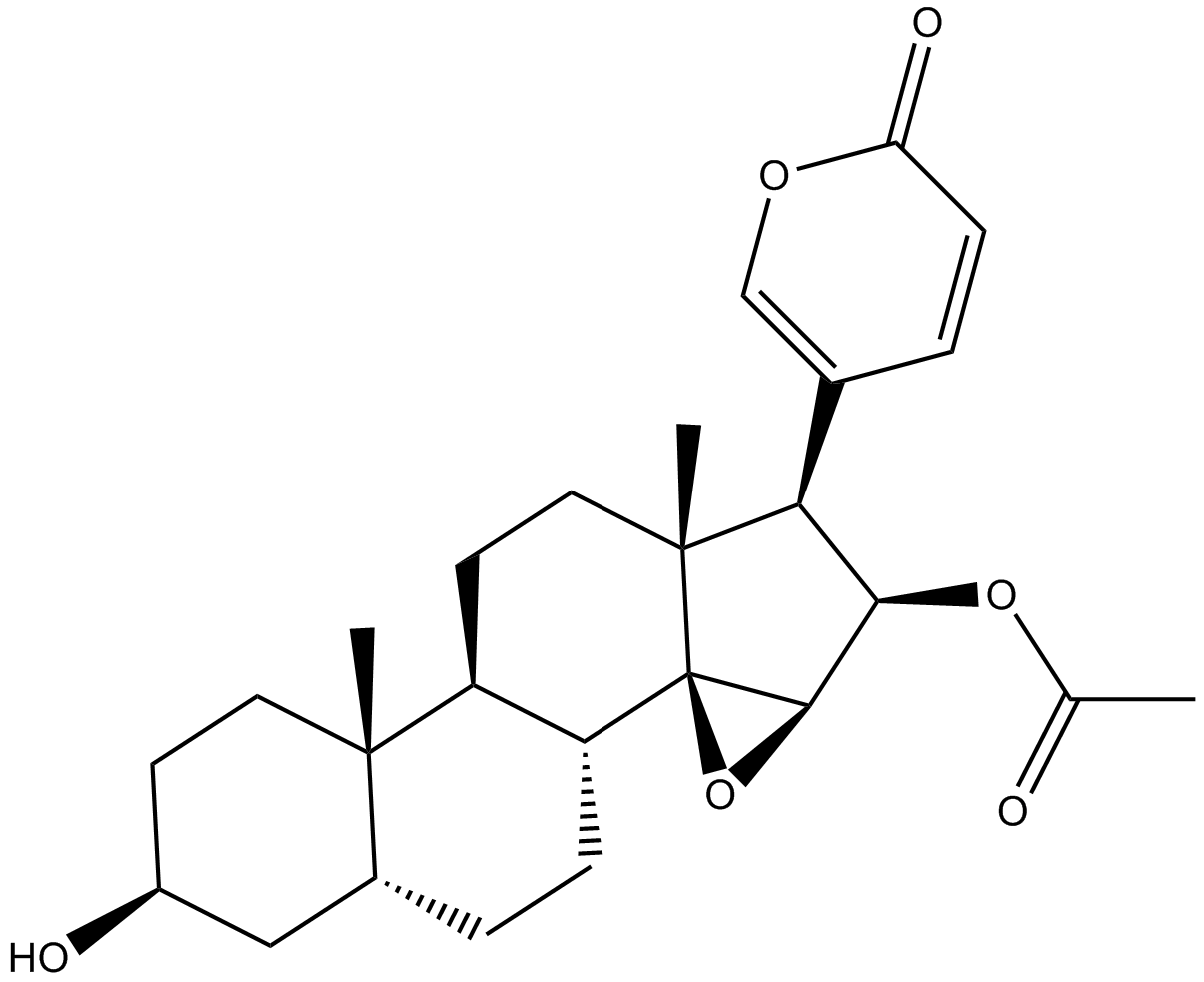
-
GC11908
Cisplatin
Le cisplatine est l'un des meilleurs et premiers médicaments chimiothérapeutiques à base de métaux, utilisé pour un large éventail de cancers solides tels que le cancer testiculaire, ovarien, de la vessie, du poumon, cervical, de la tête et du cou, gastrique et certains autres cancers.
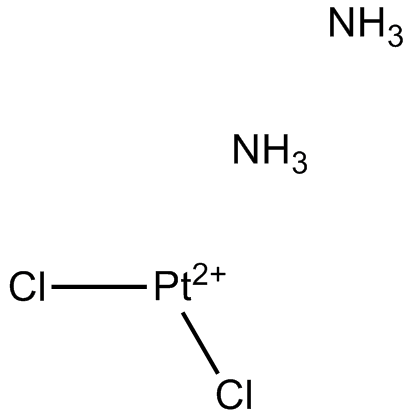
-
GC17491
CITCO
CITCO, un dérivé de l'imidazothiazole, est un agoniste sélectif du récepteur constitutif de l'androstane (CAR). CITCO inhibe la croissance et l'expansion des cellules souches des tumeurs cérébrales (BTSC) et a une EC50 de 49nM sur le récepteur pregnane X (PXR), et aucune activité sur les autres récepteurs nucléaires.
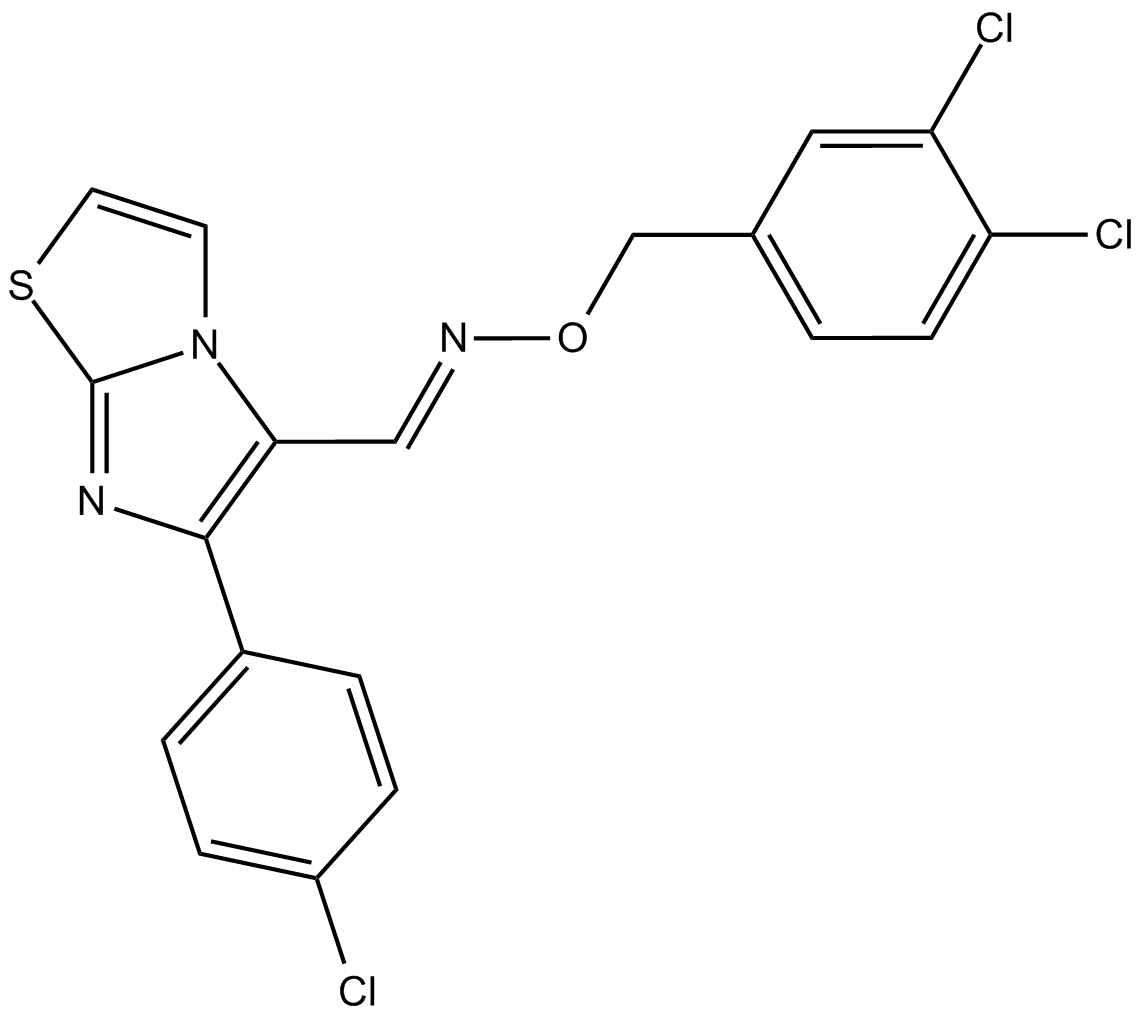
-
GC35703
Citicoline
La citicoline (Cytidine diphosphate-choline) est un intermédiaire dans la synthèse de la phosphatidylcholine, un composant des membranes cellulaires.
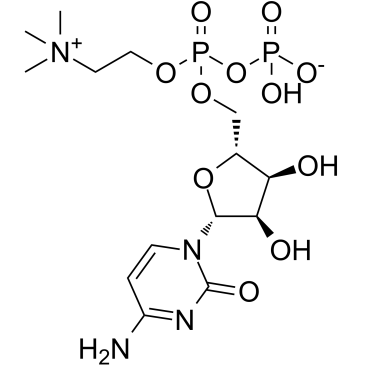
-
GC31186
Citicoline sodium salt
Le sel de sodium de citicoline est un intermédiaire dans la synthèse de la phosphatidylcholine, qui est un composant des membranes cellulaires et exerce également des effets neuroprotecteurs.
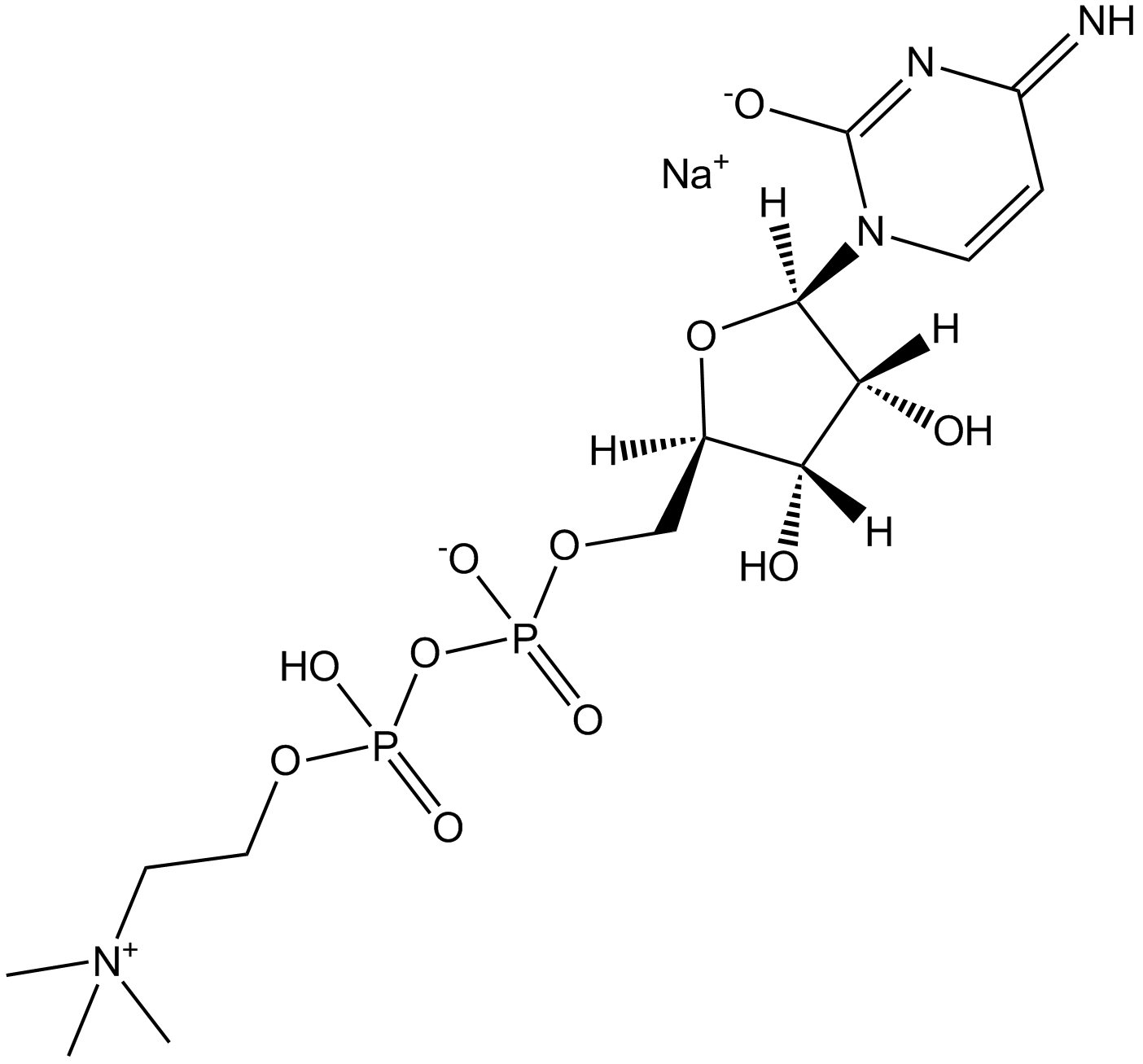
-
GC43273
Citreoindole
Citreoindole is a diketopiperazine metabolite isolated from a hybrid cell fusion of two strains of P.
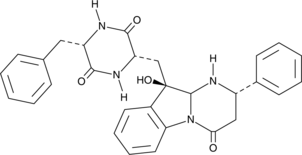
-
GC41514
Citreoviridin
La citréoviridine, une toxine du Penicillium citreoviride NRRL 2579, inhibe les activités synaptosomales cérébrales Na+/K+-ATPase alors que dans les microsomes, les activités Na+/K+-ATPase et Mg2+-ATPase sont significativement stimulés de manière dose-dépendante.
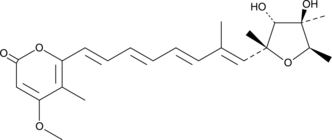
-
GC14203
Citric acid
L'acide citrique est un conservateur naturel et un exhausteur d'acidité alimentaire.
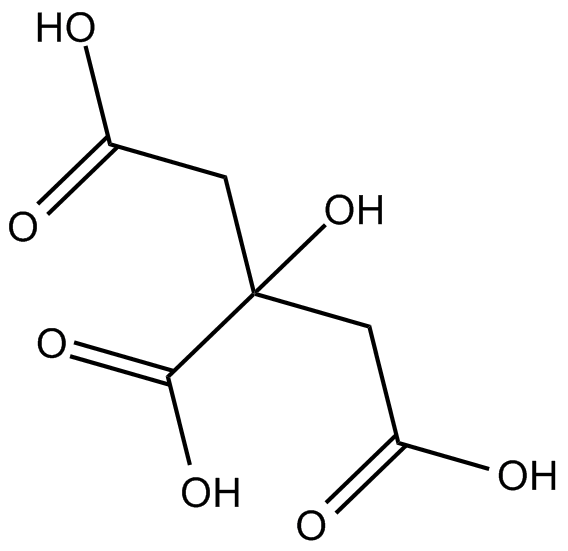
-
GC68051
Citric acid-d4

-
GC16661
Citrinin
Une mycotoxine induisant l'apoptose.
